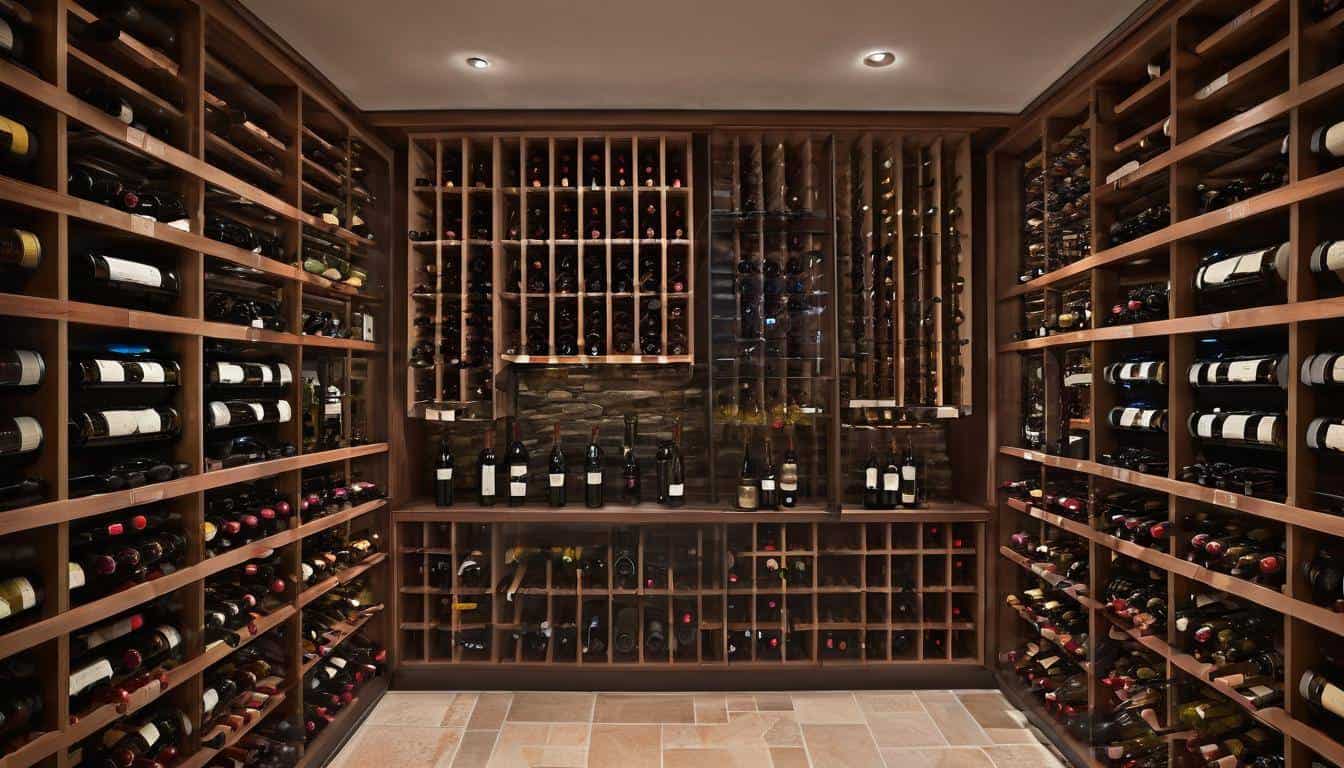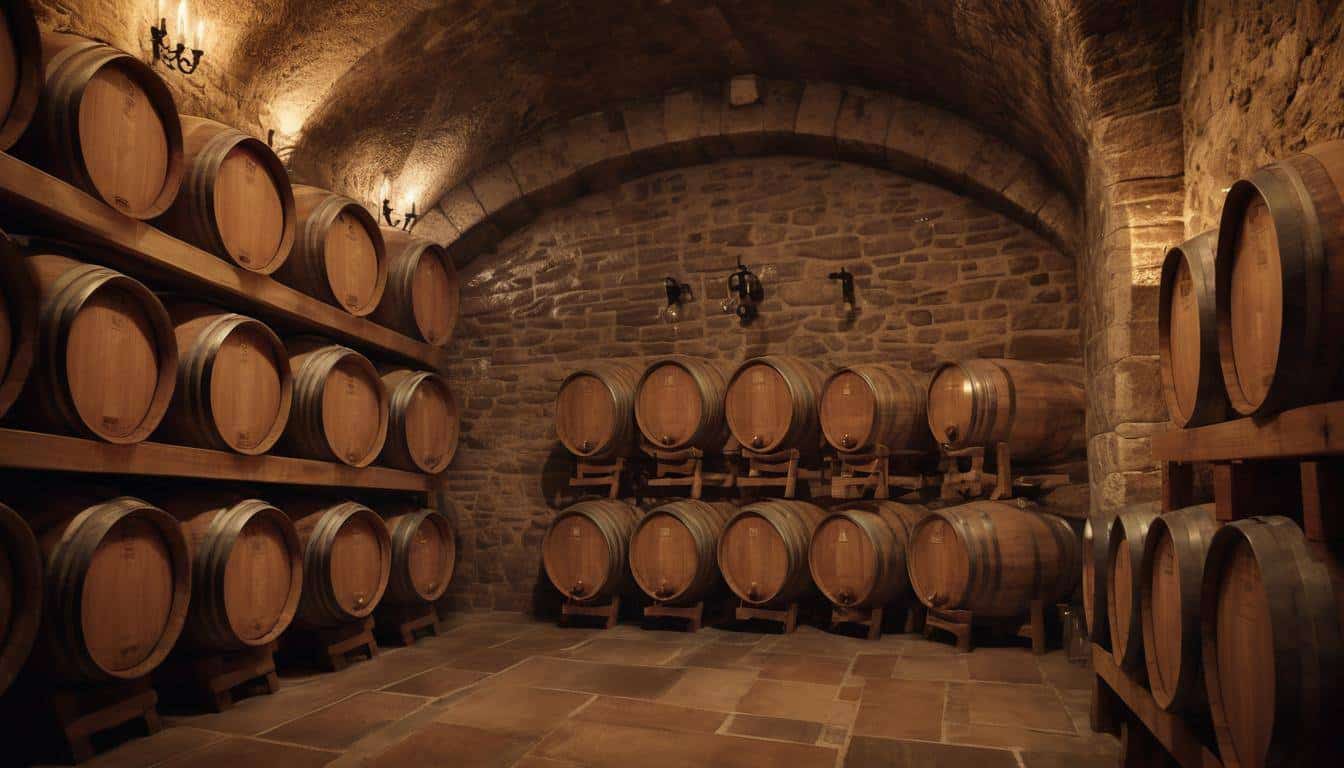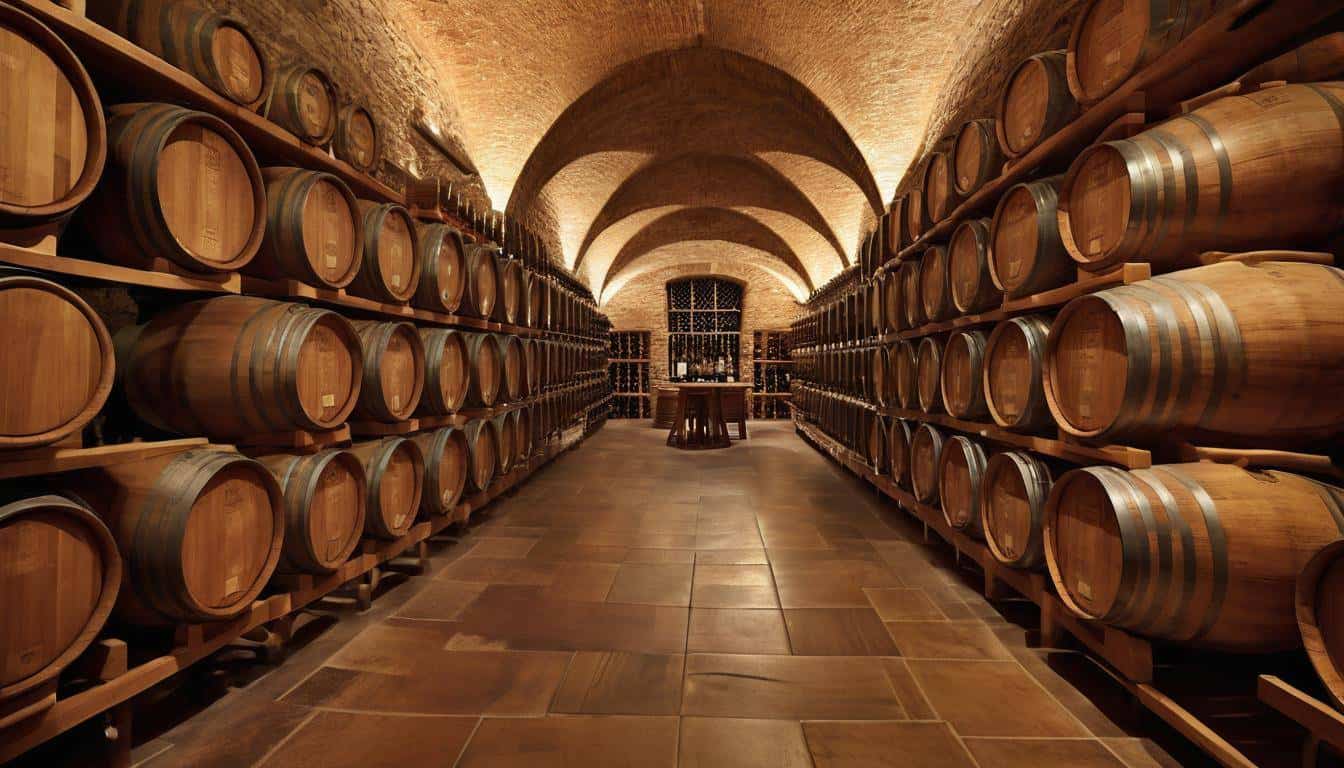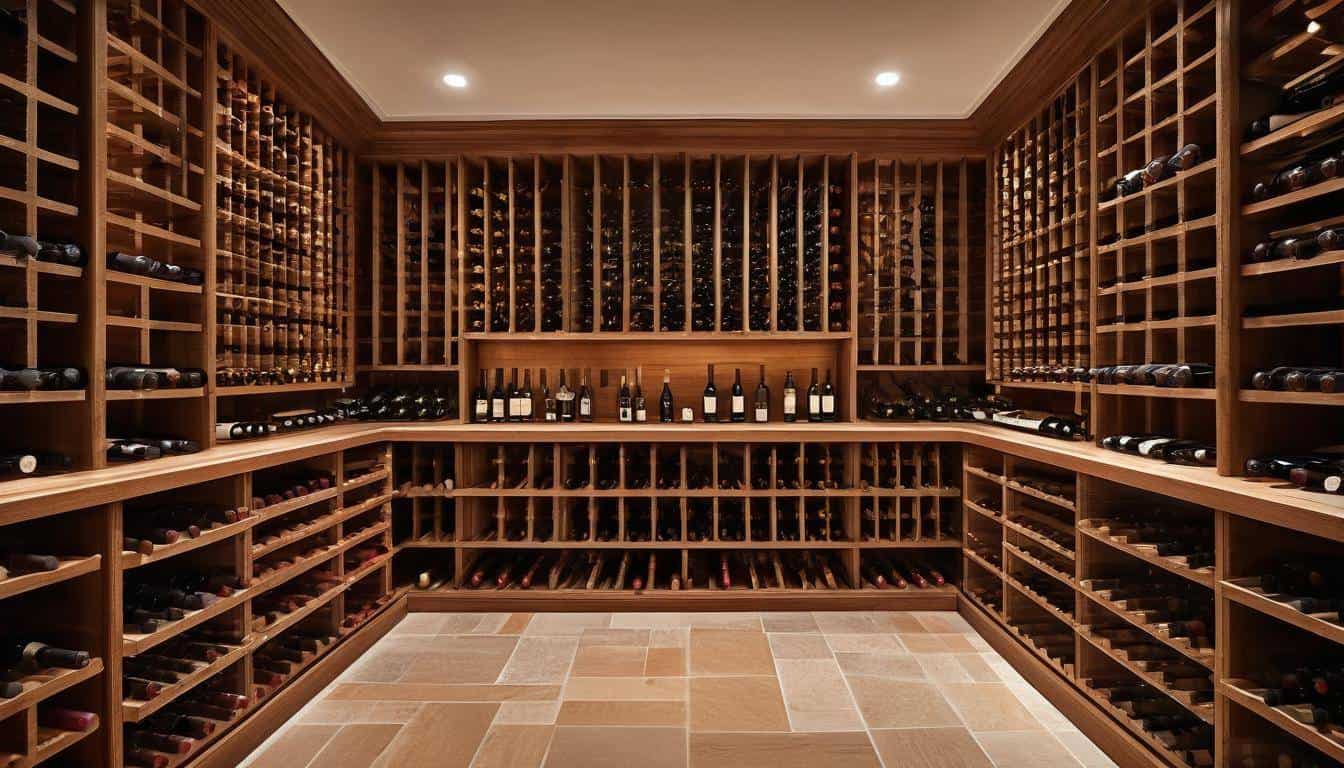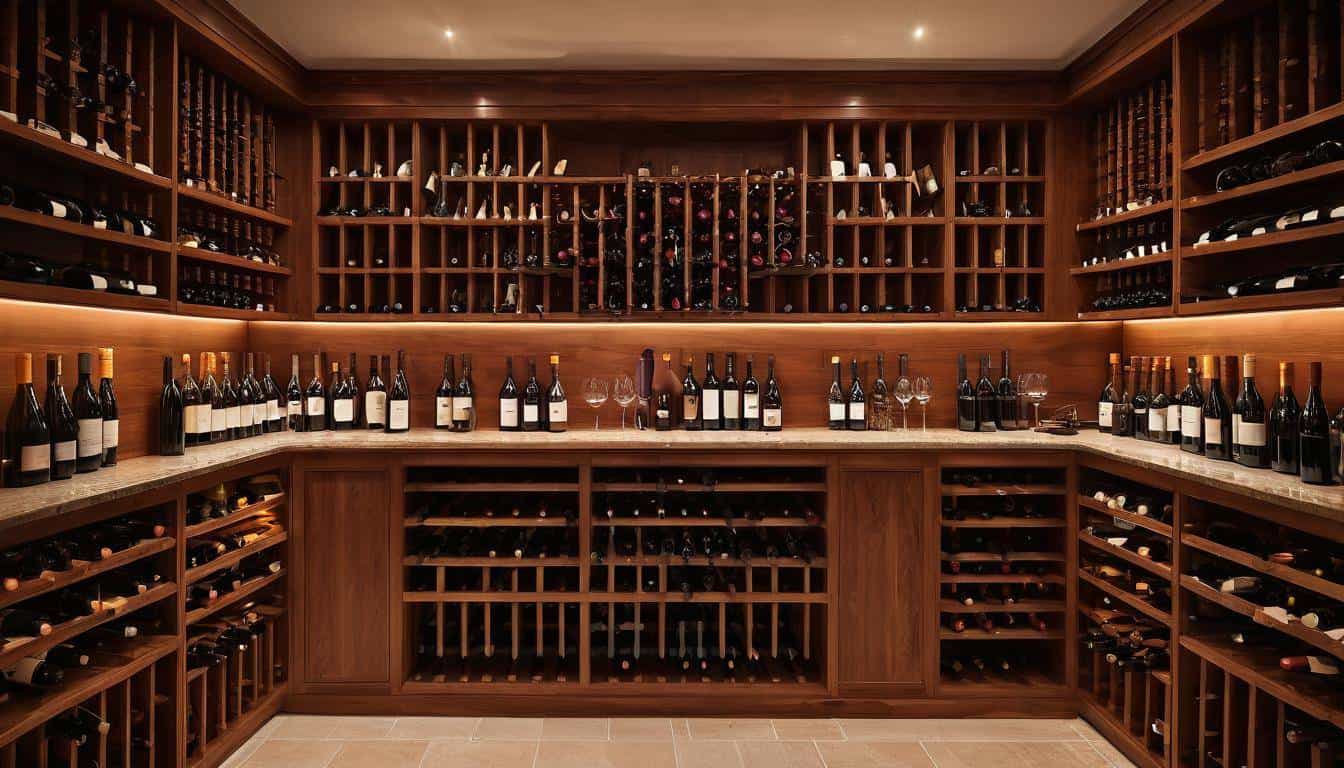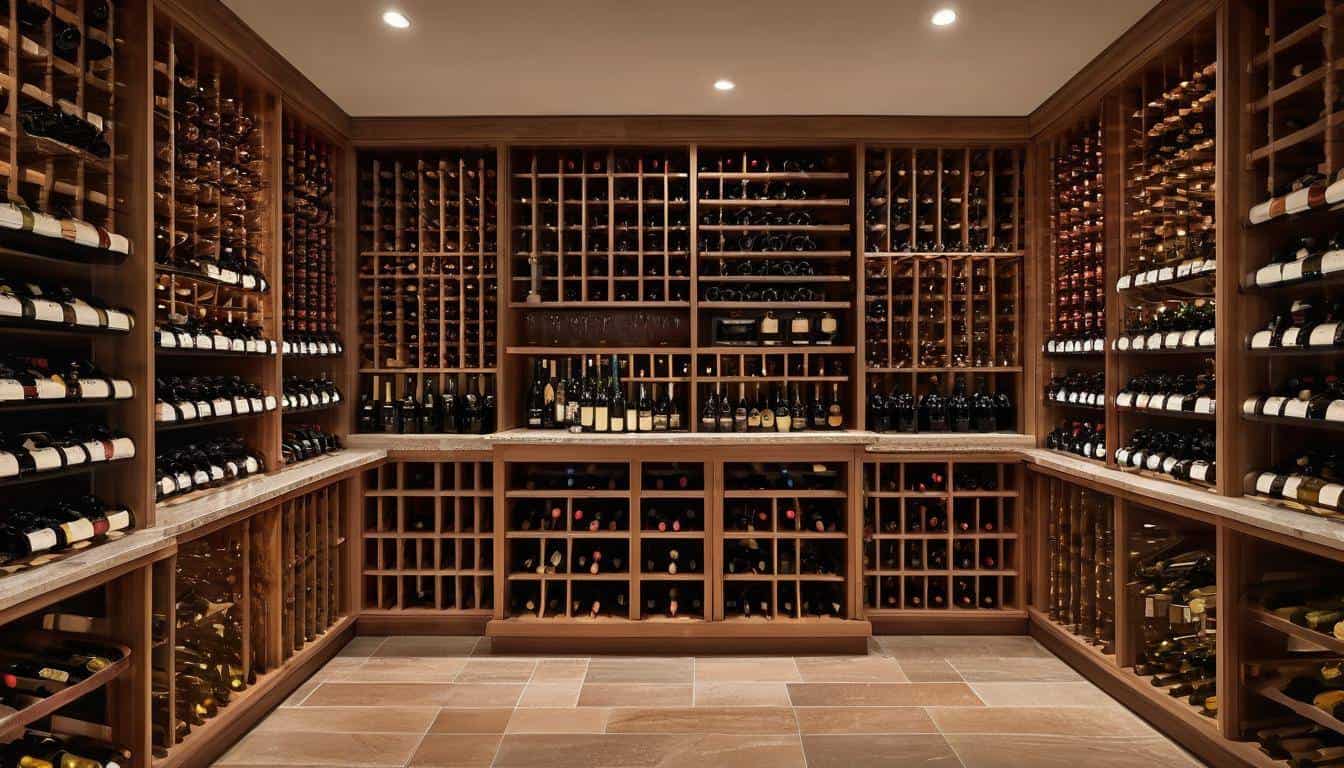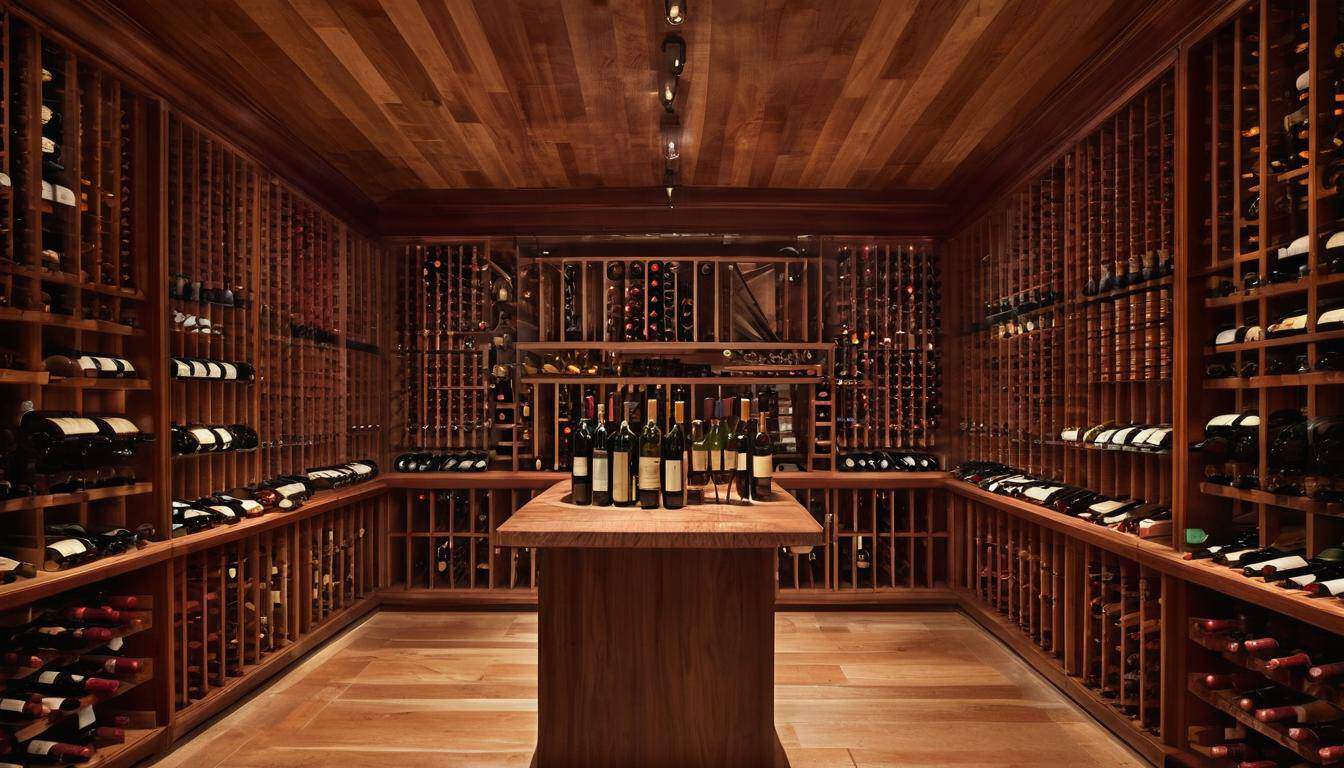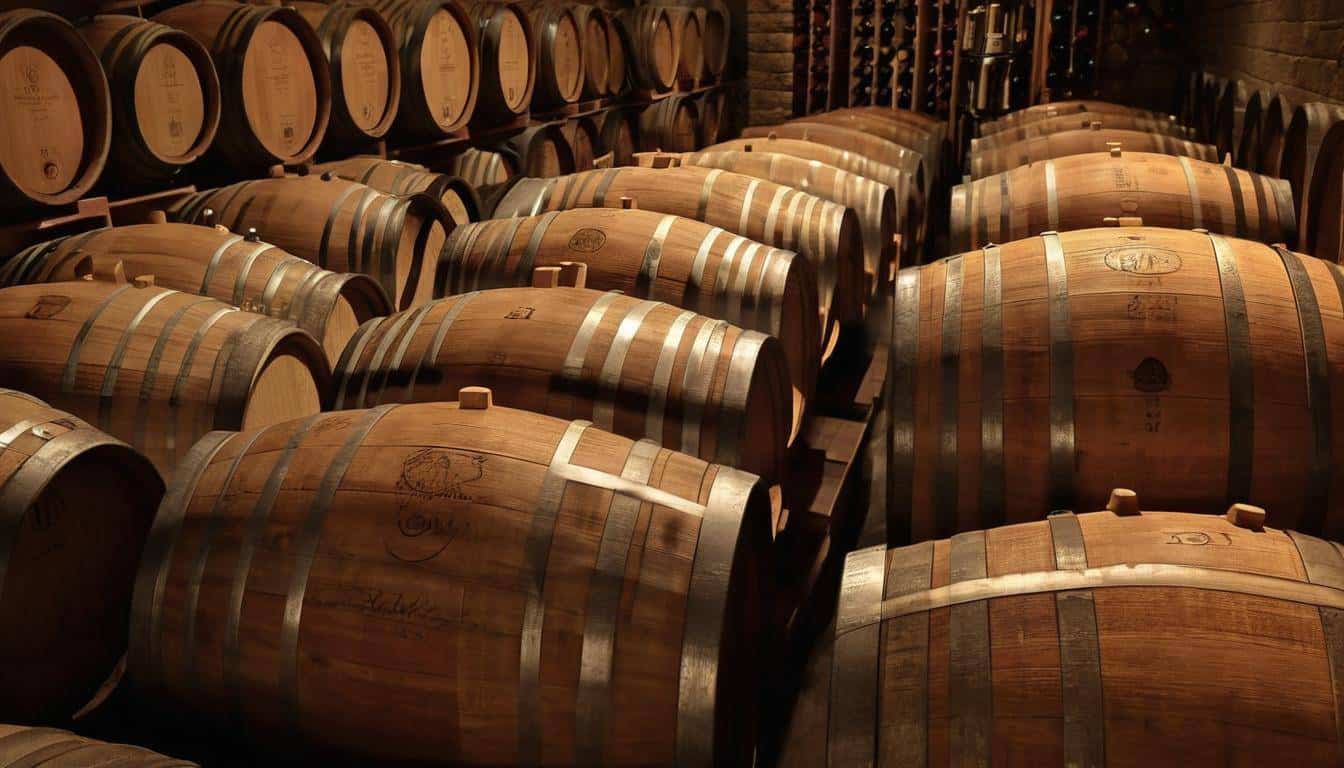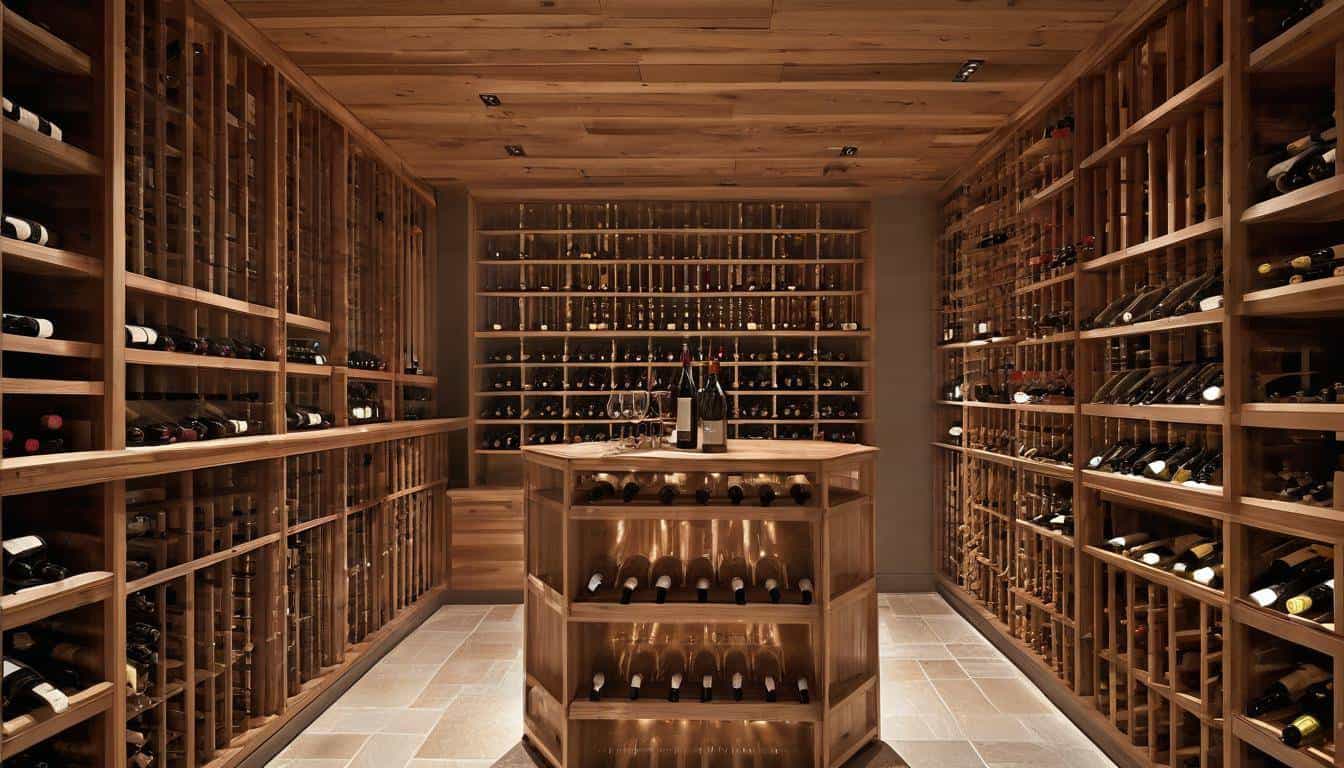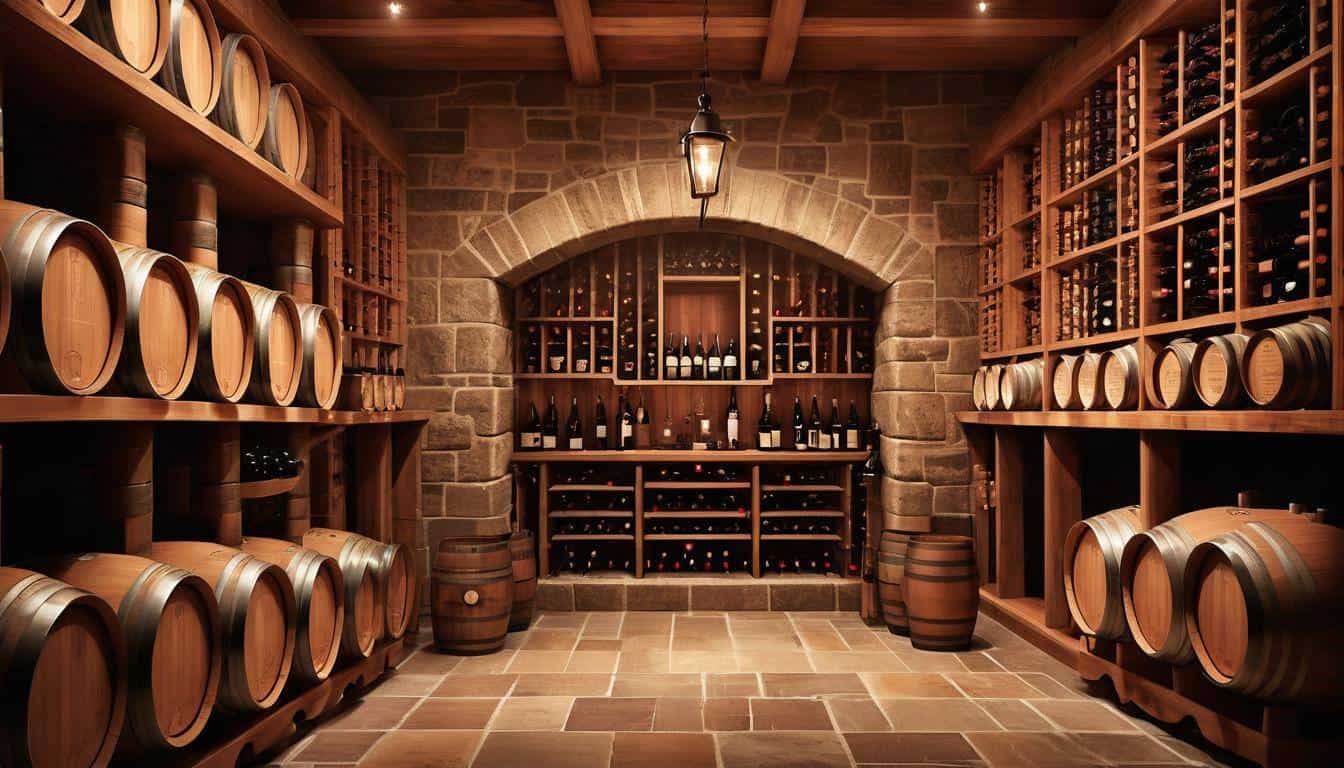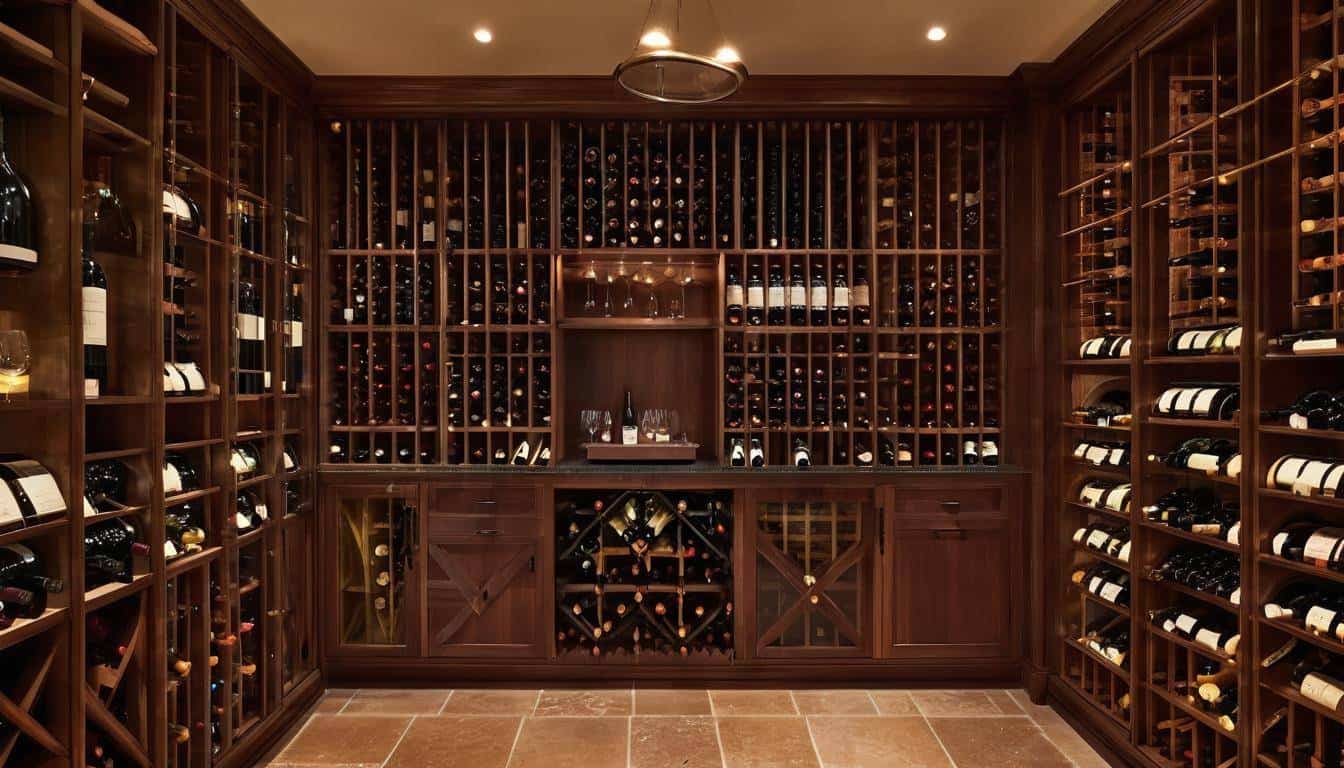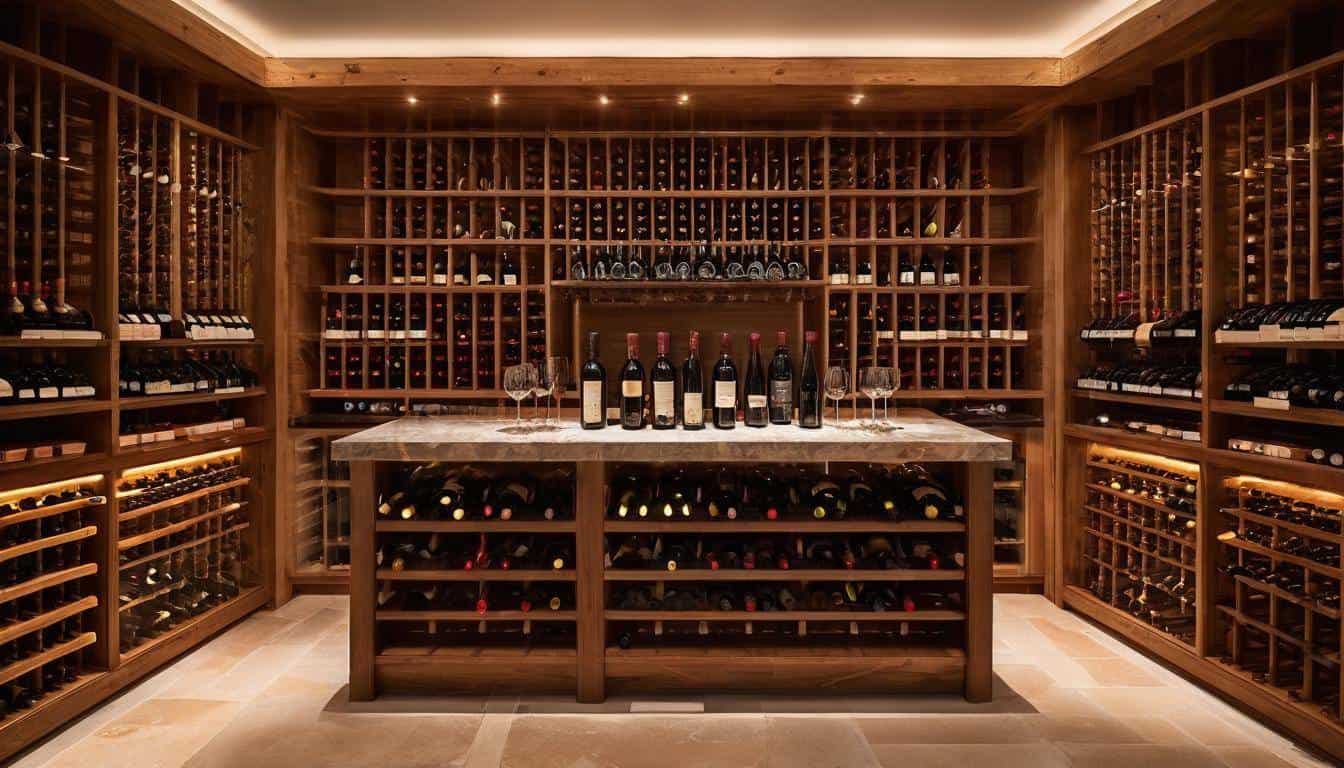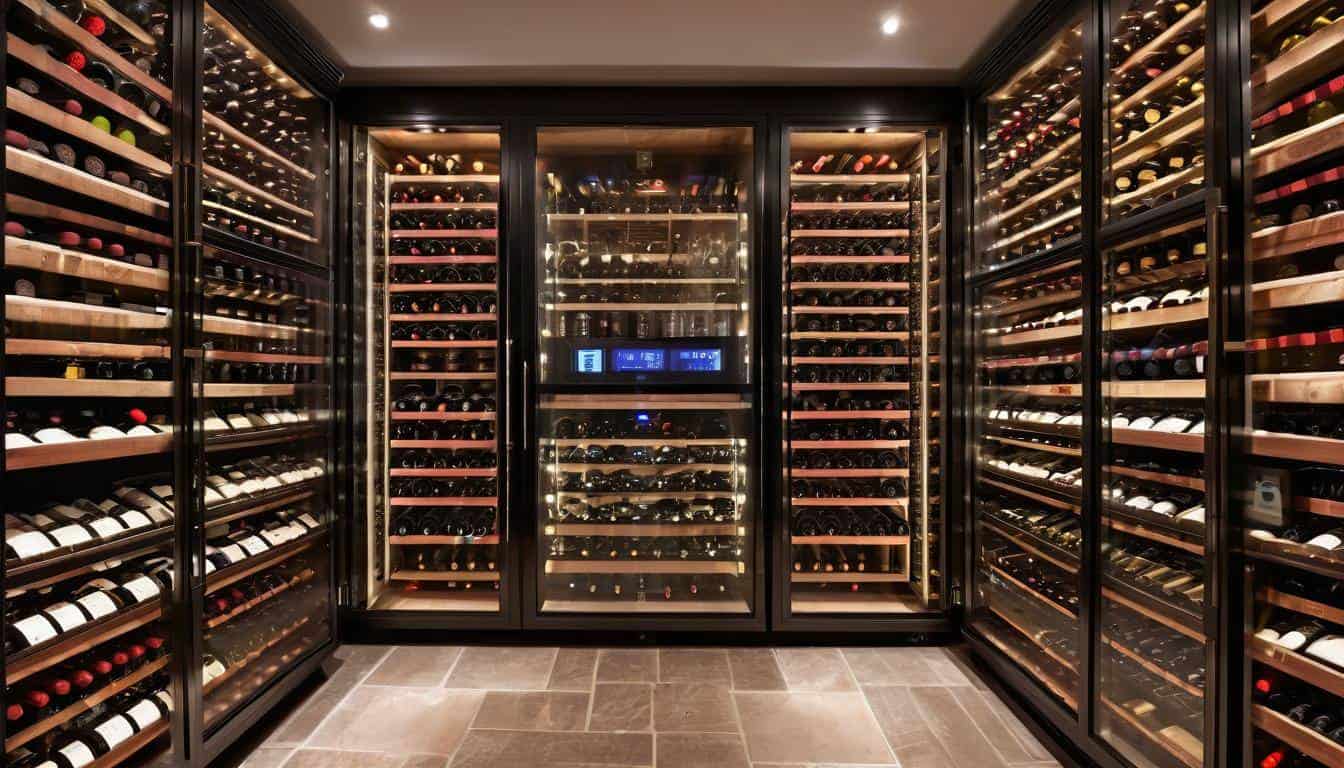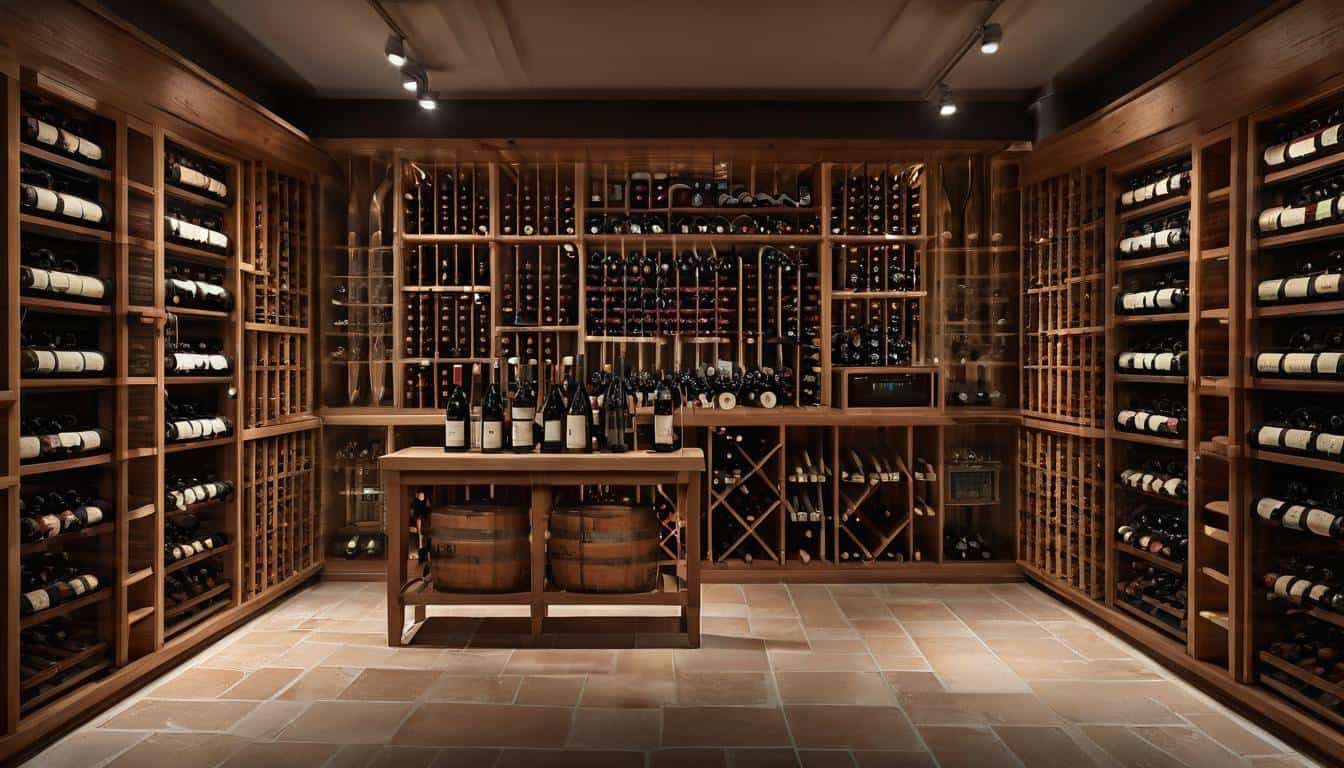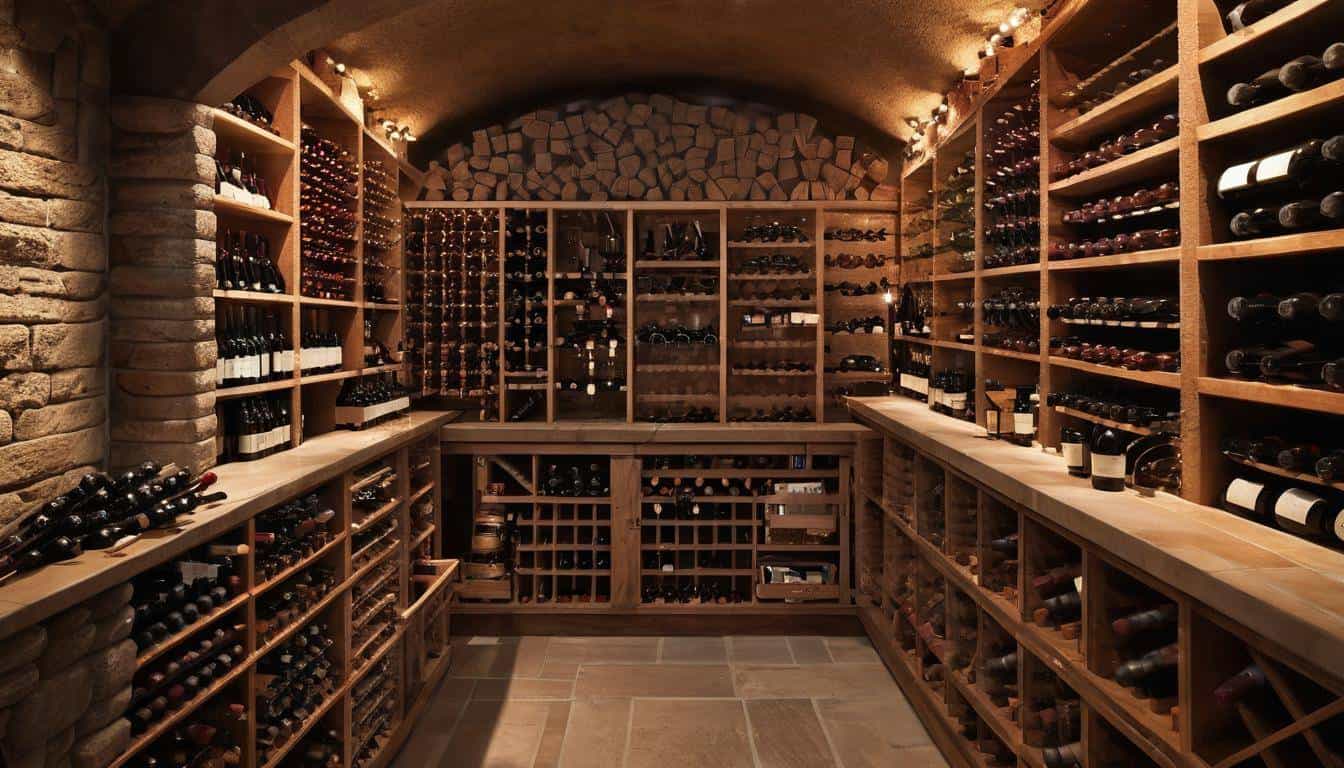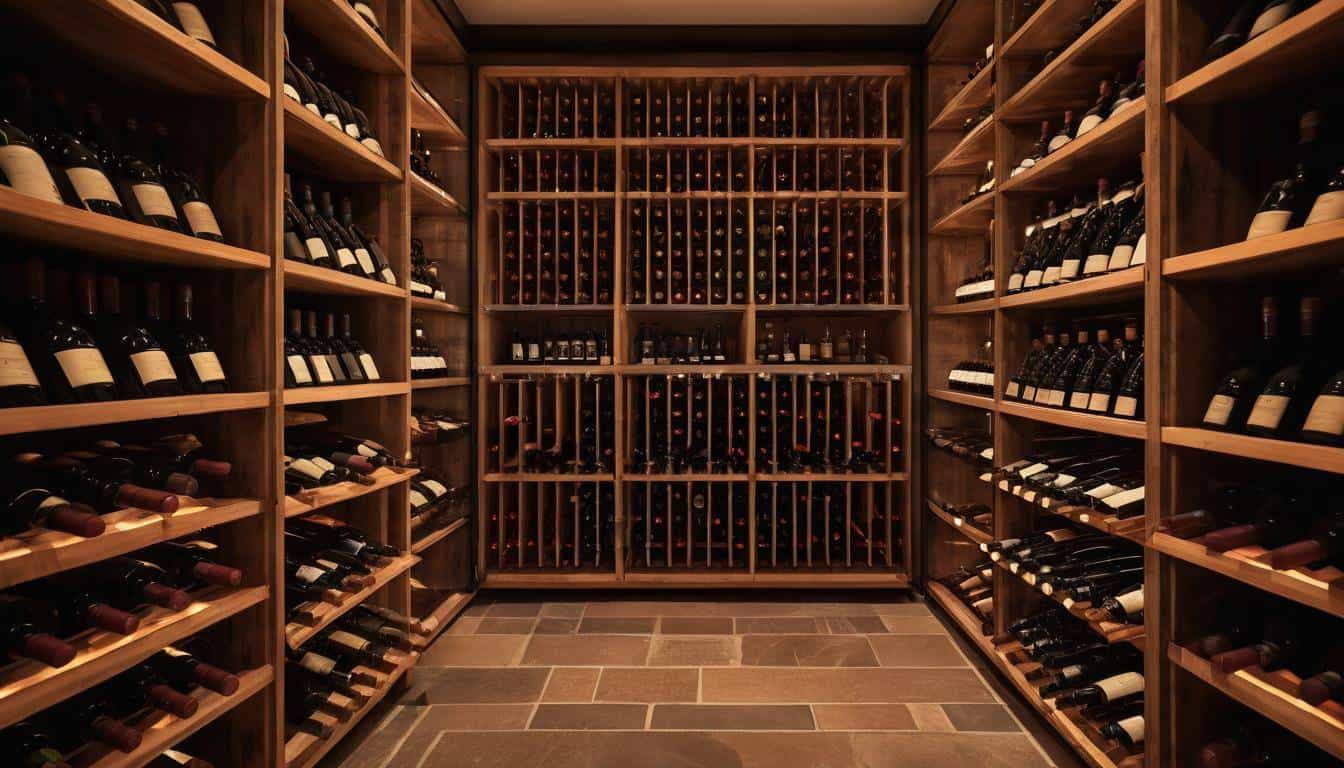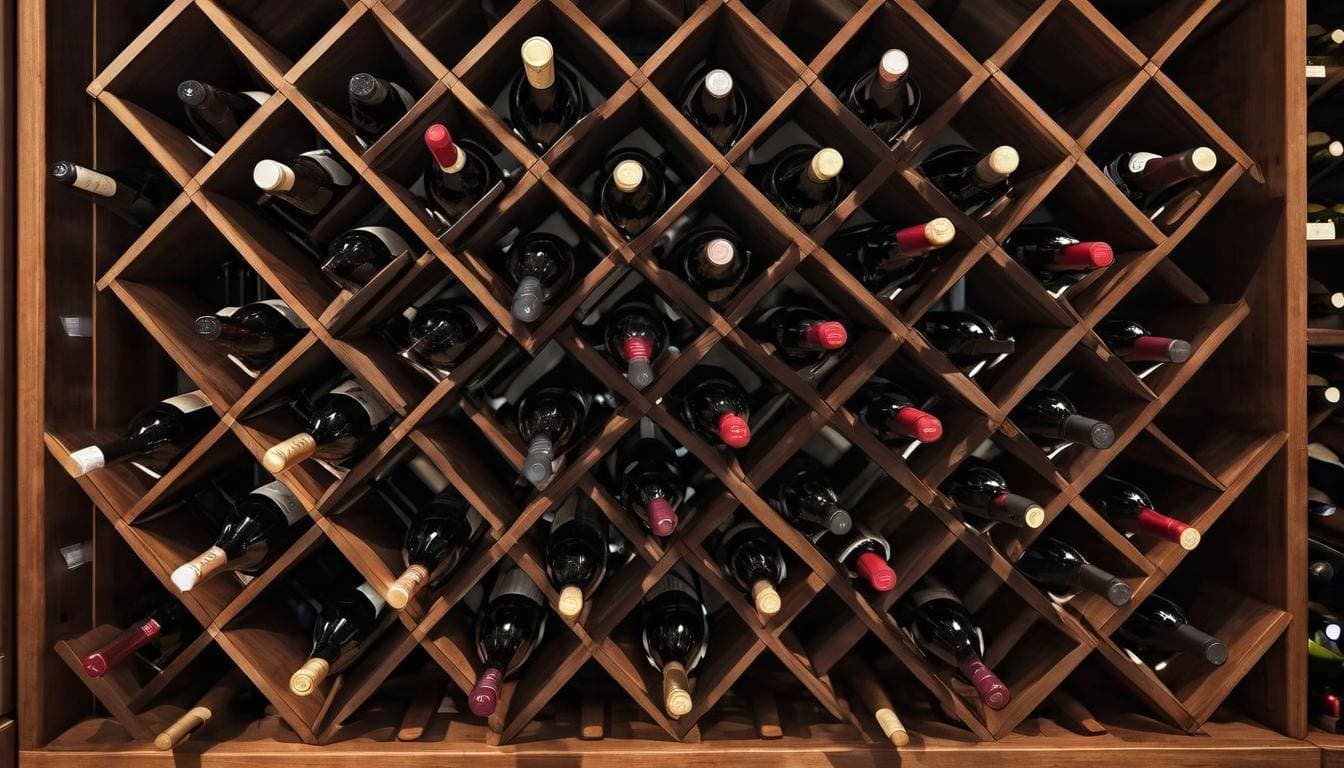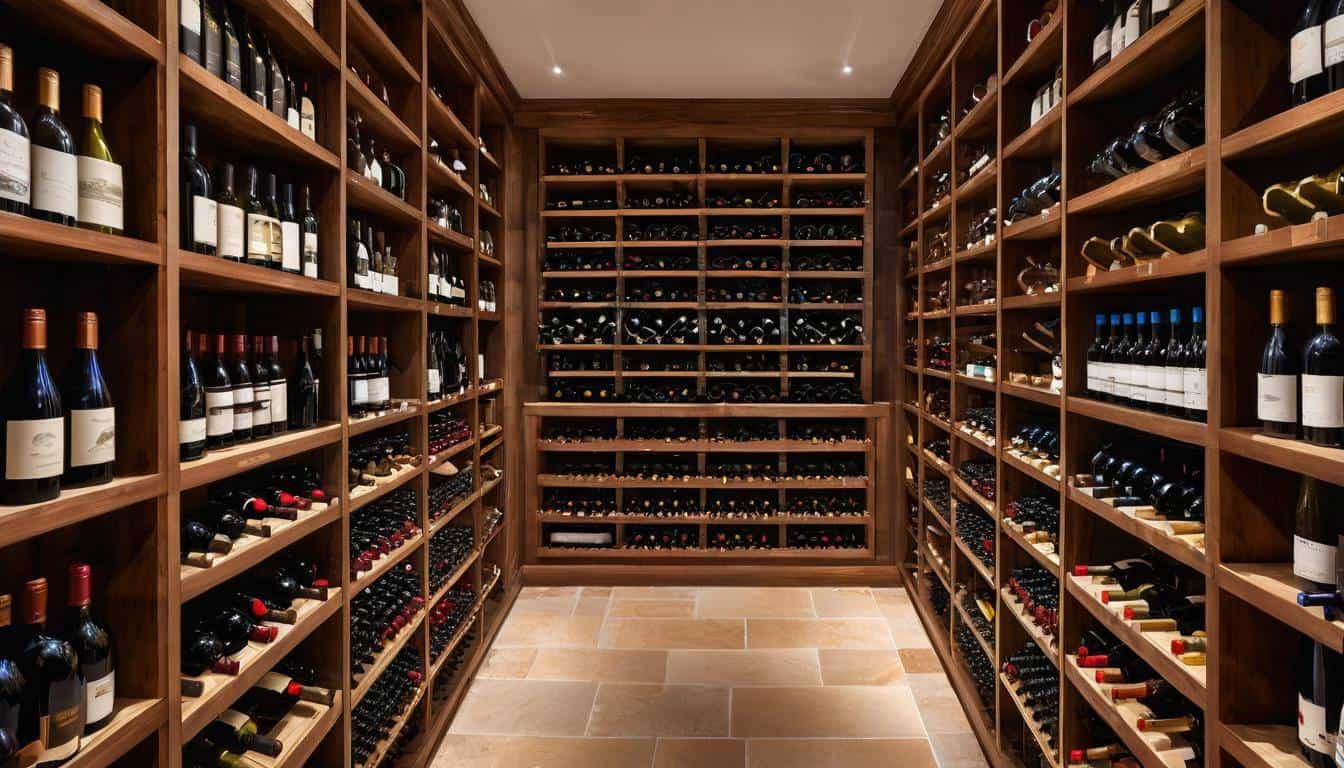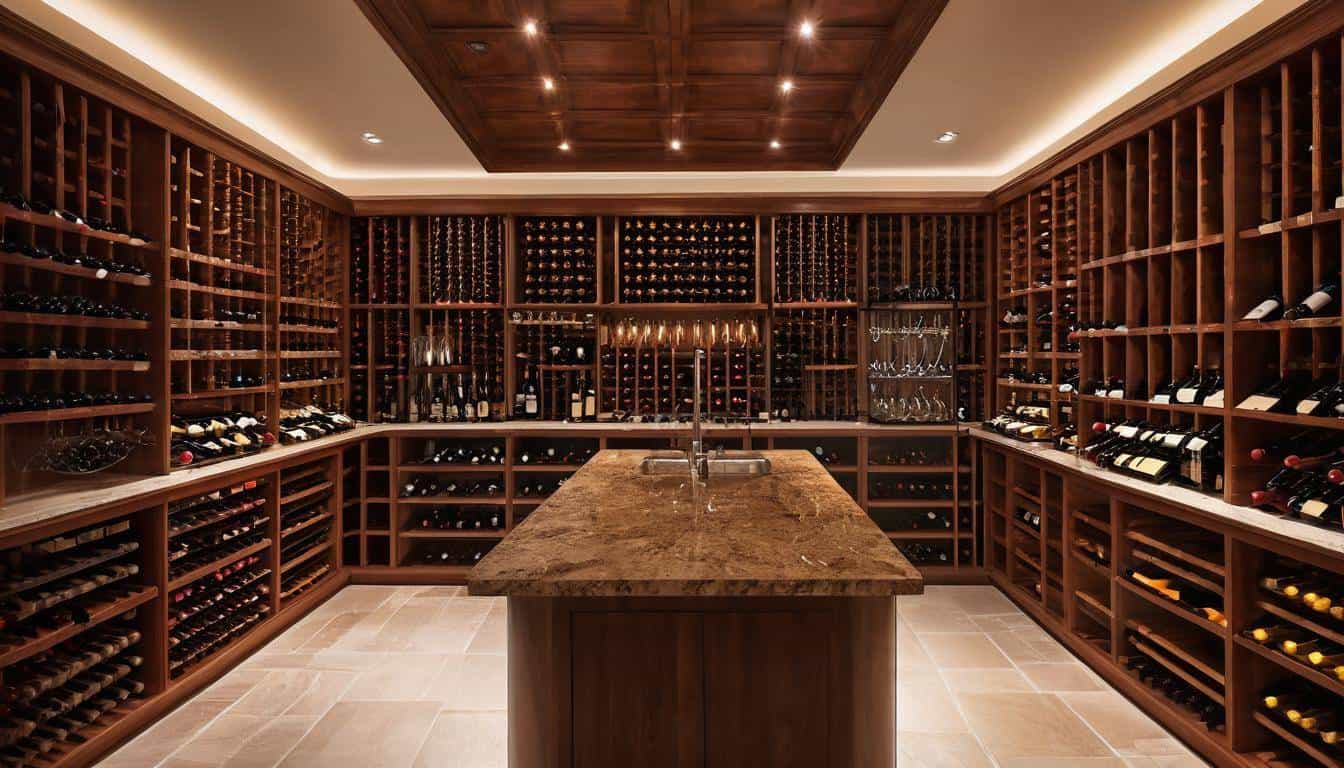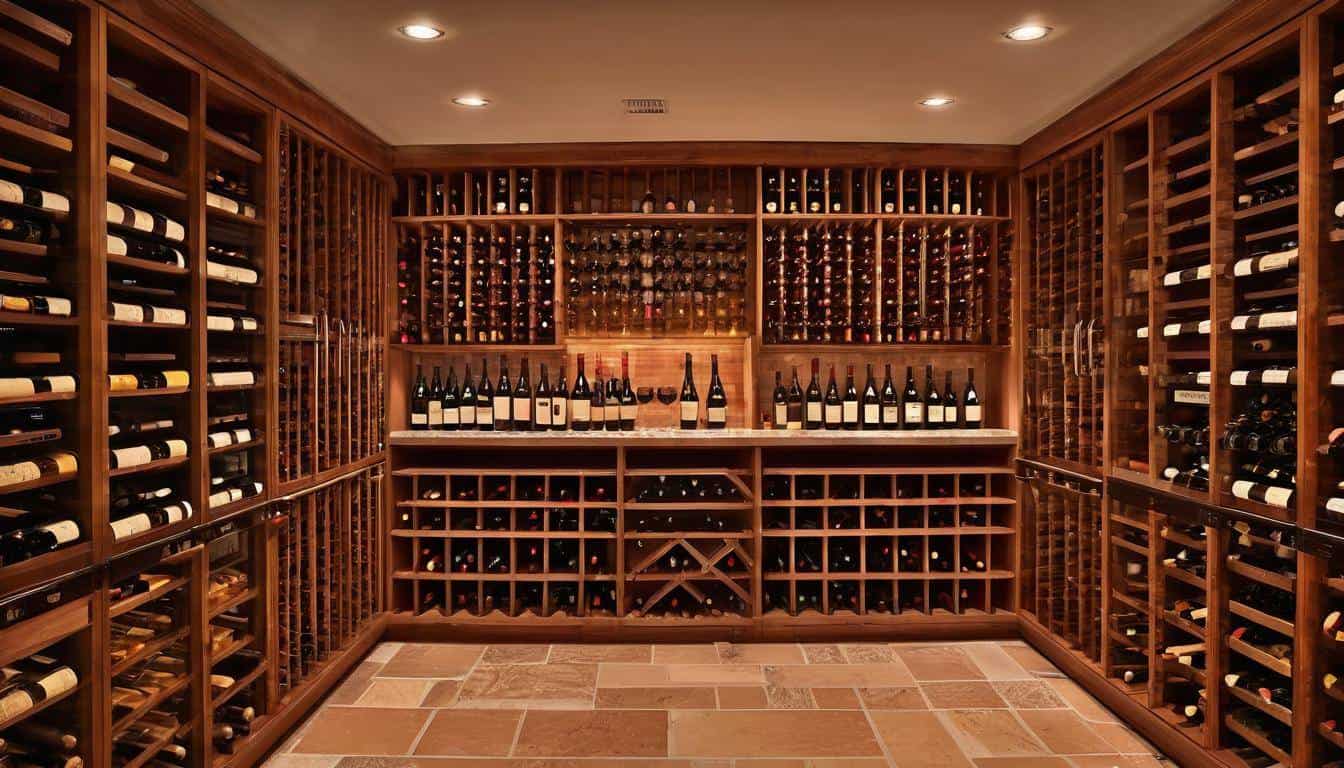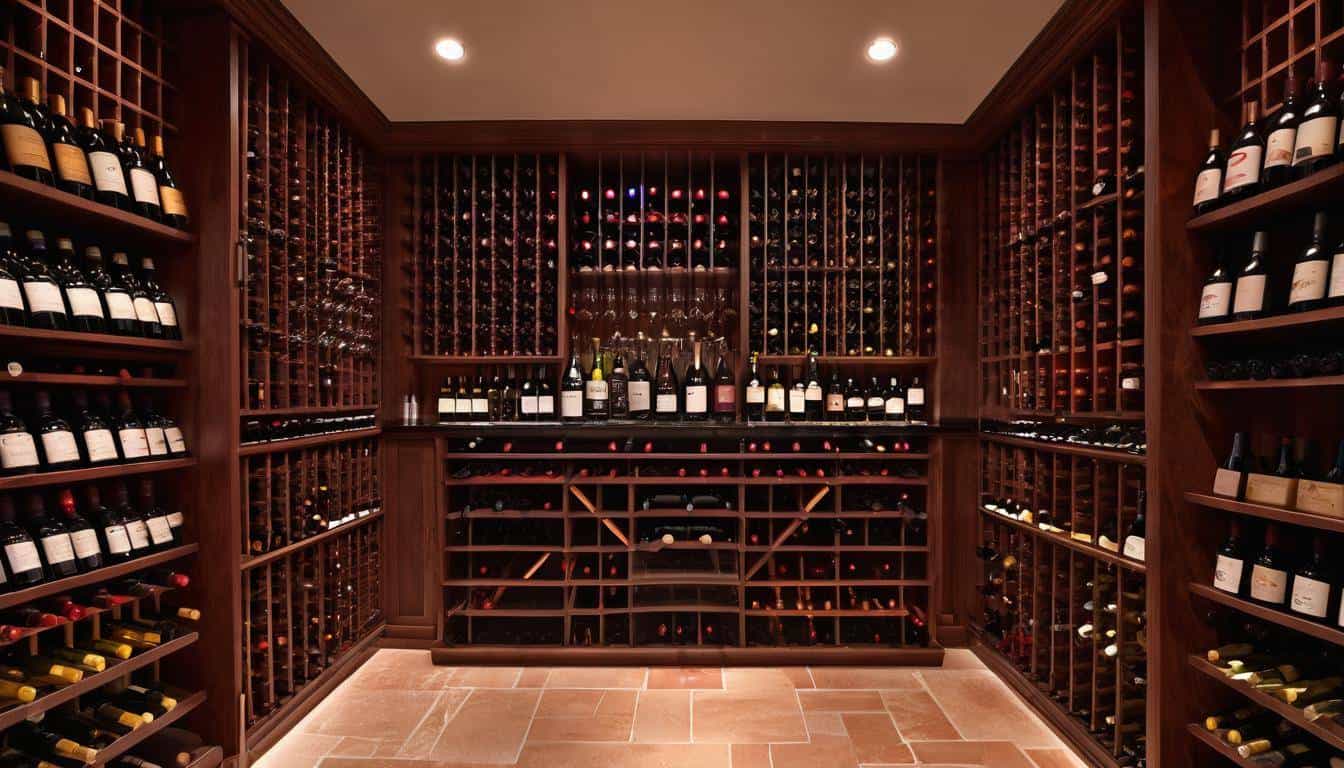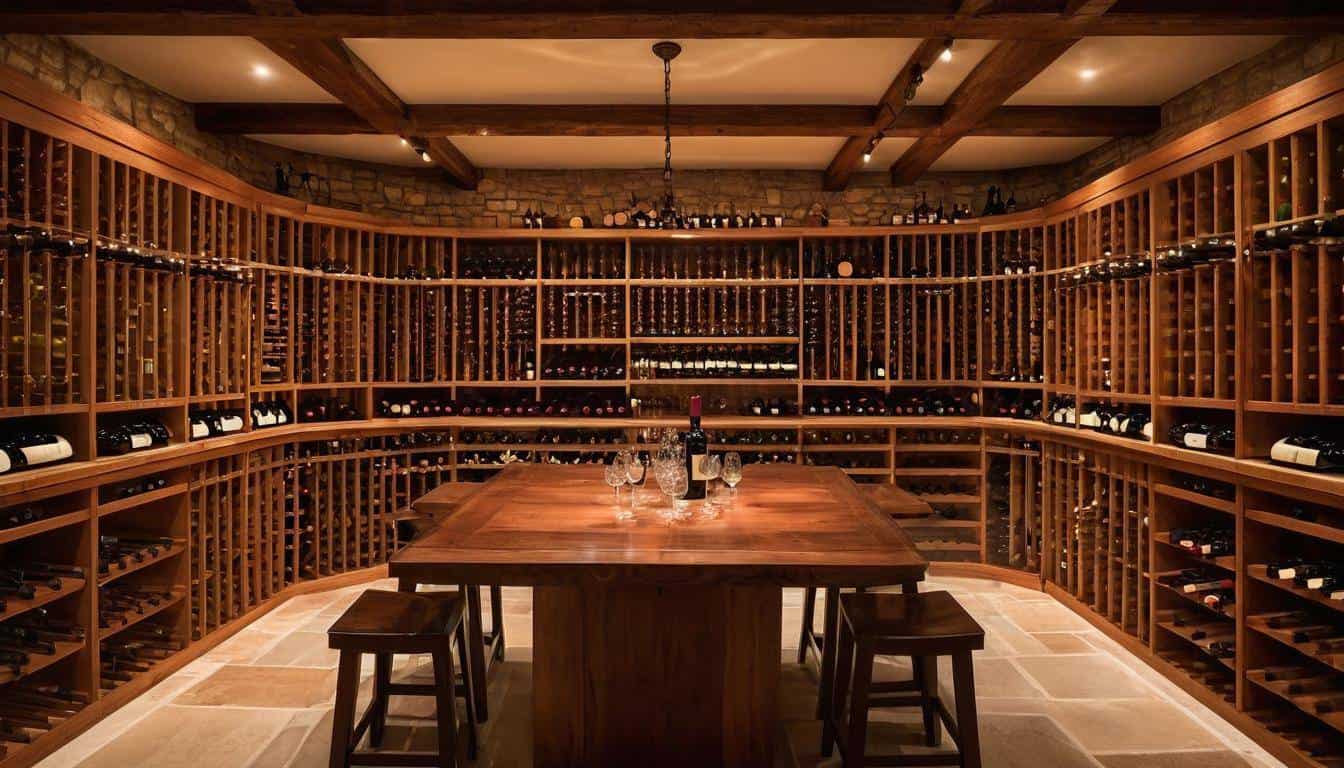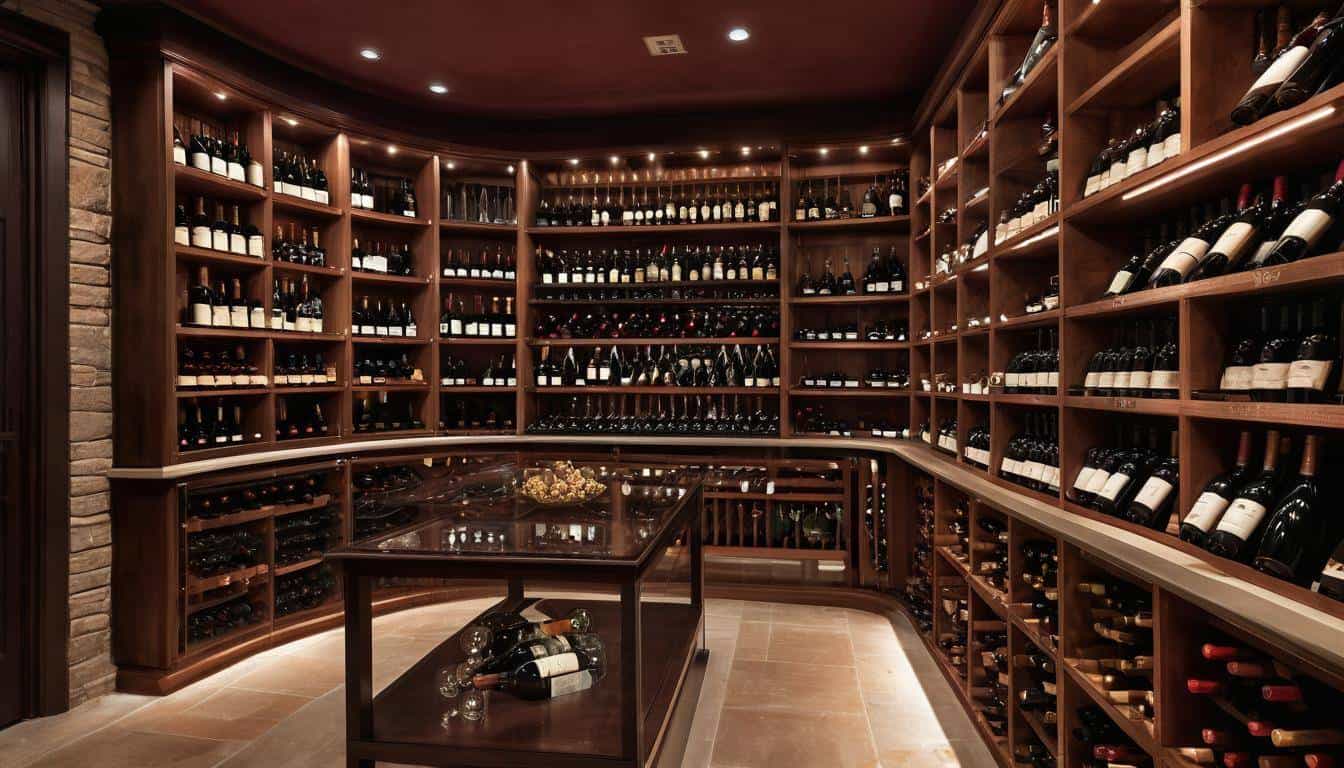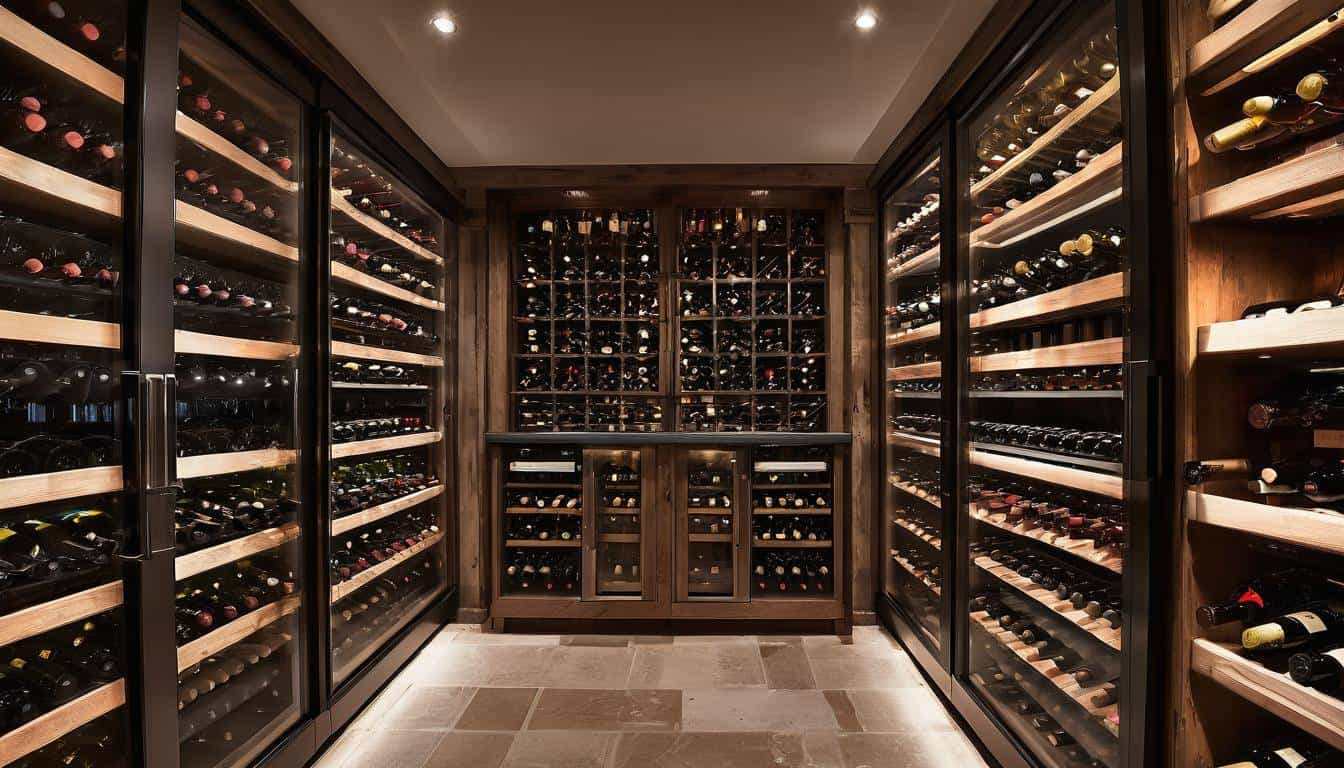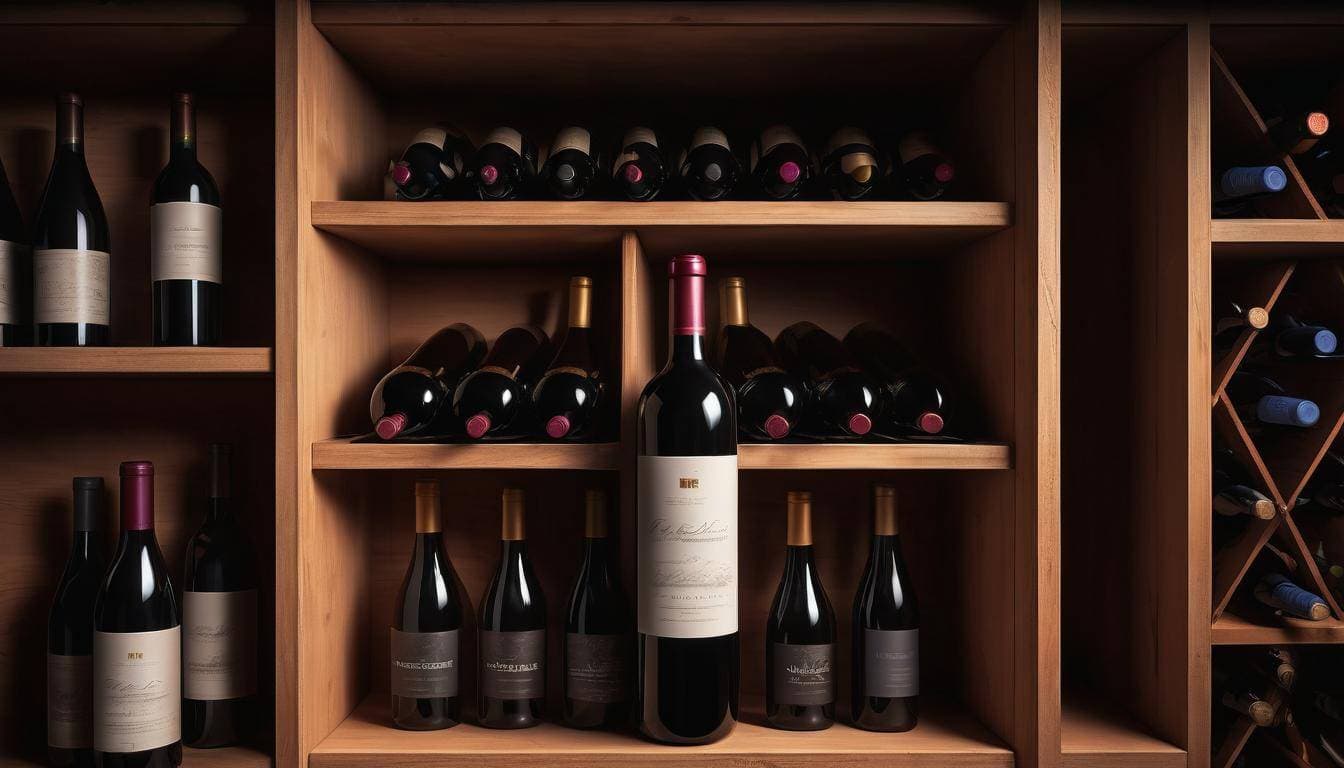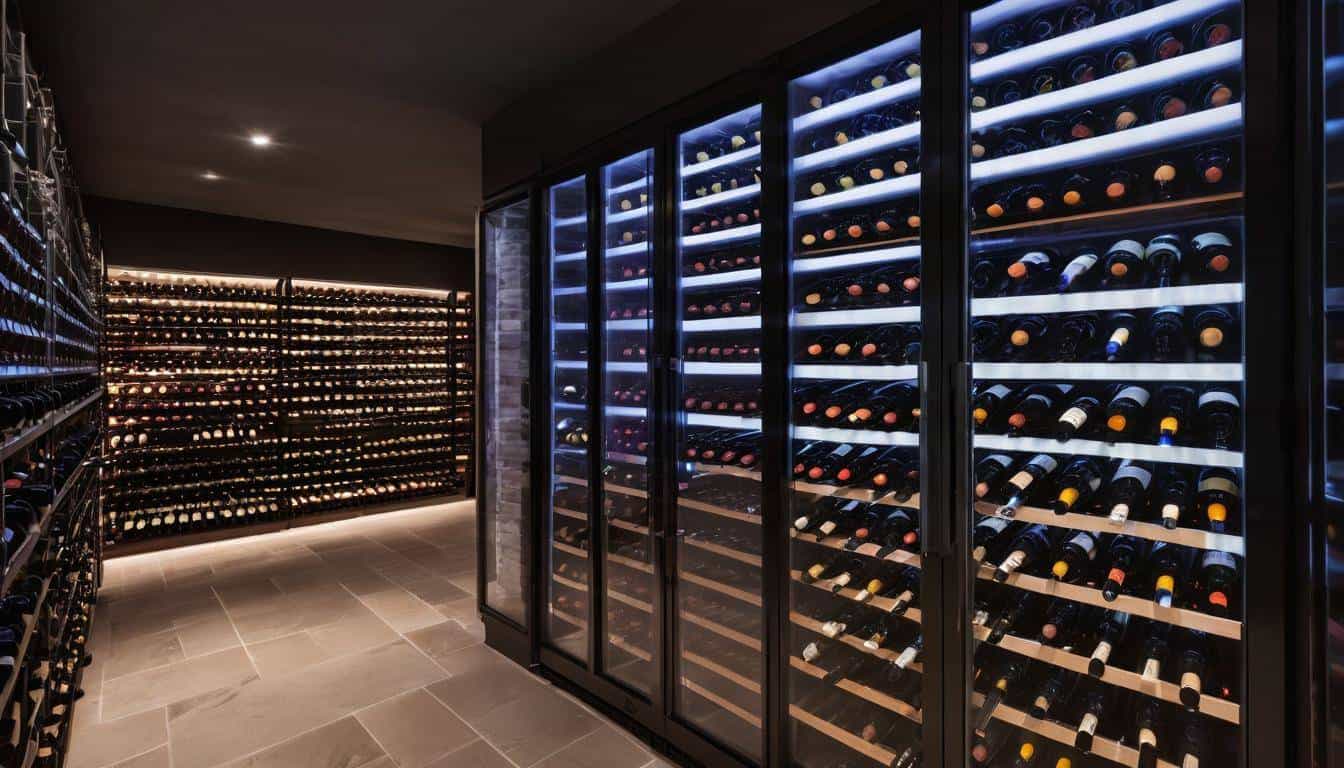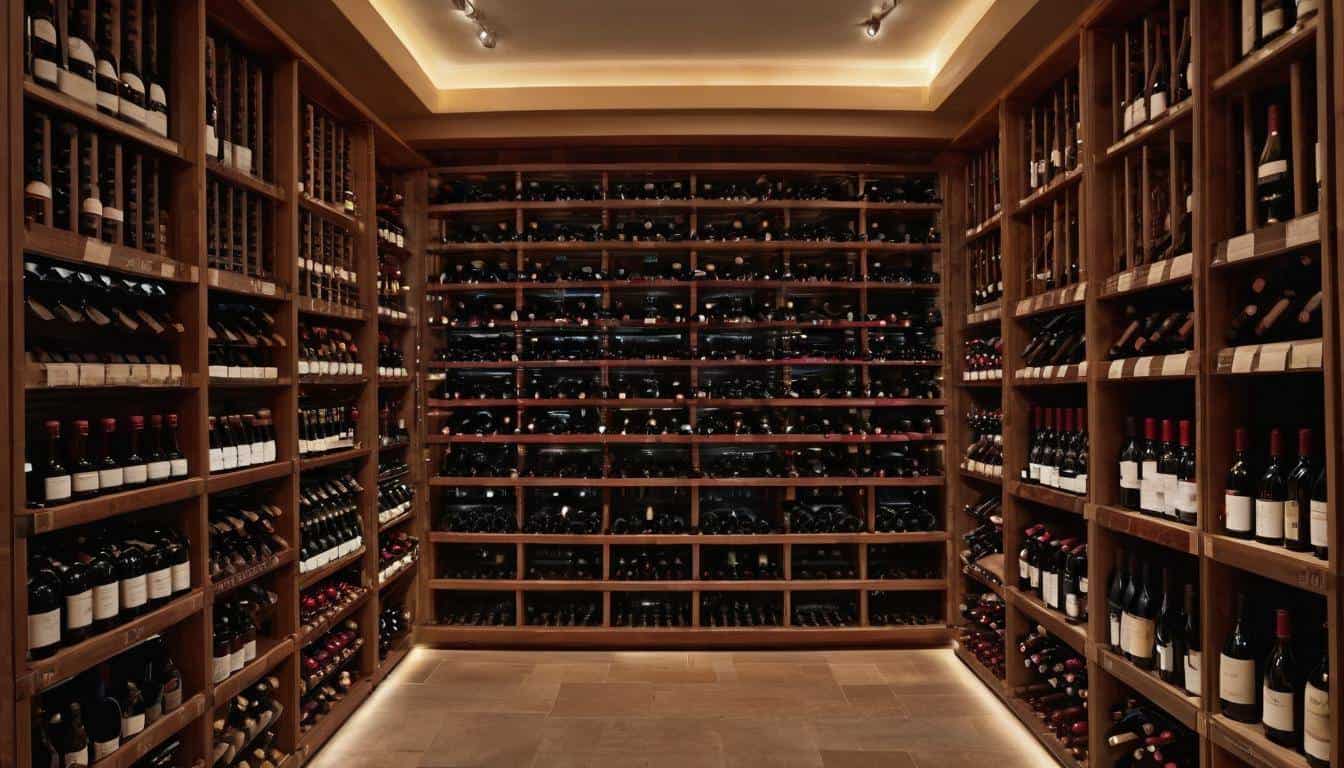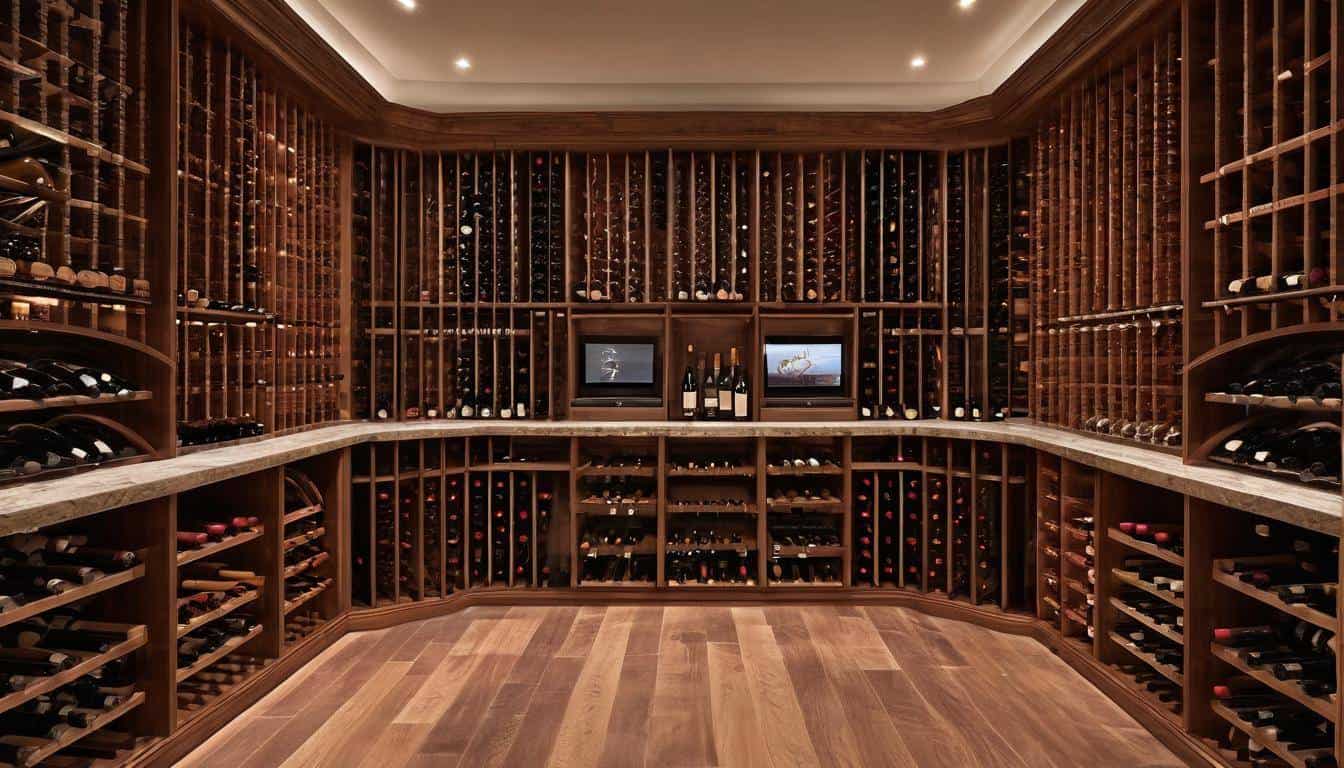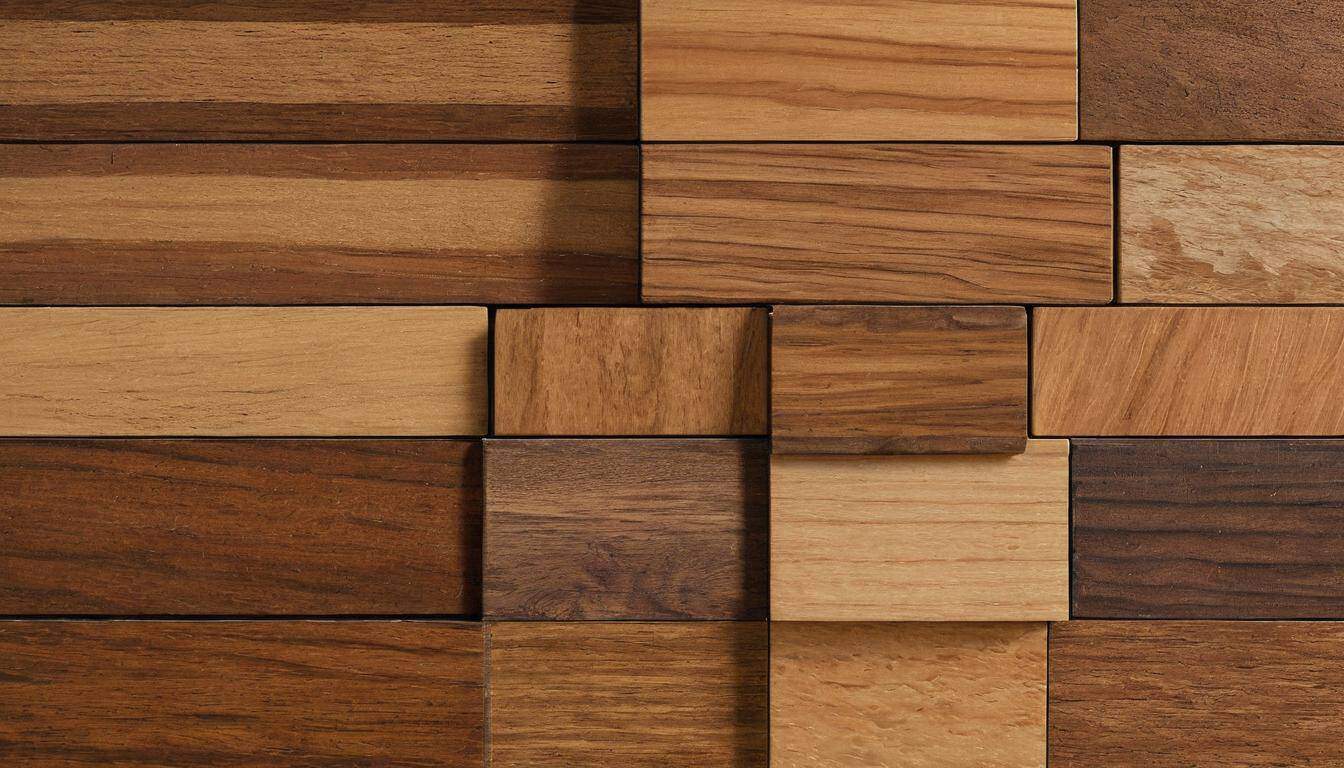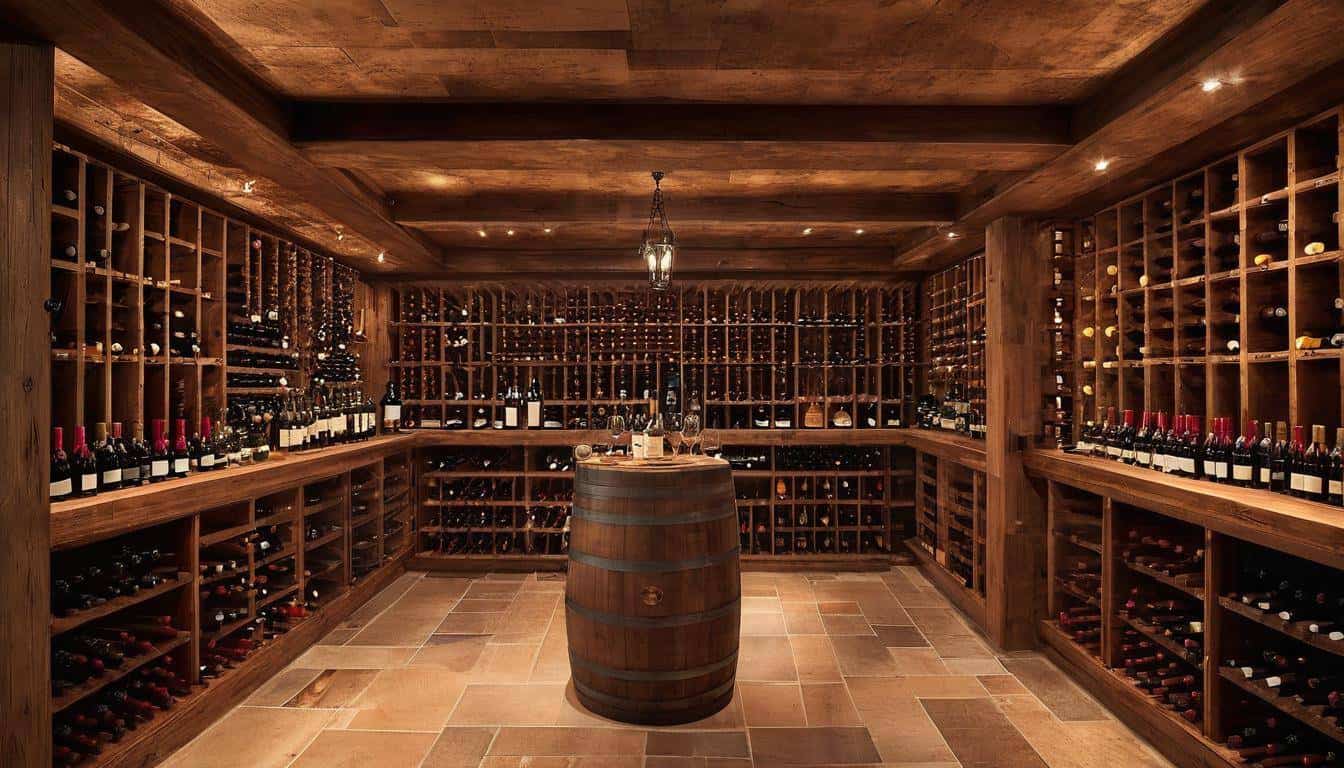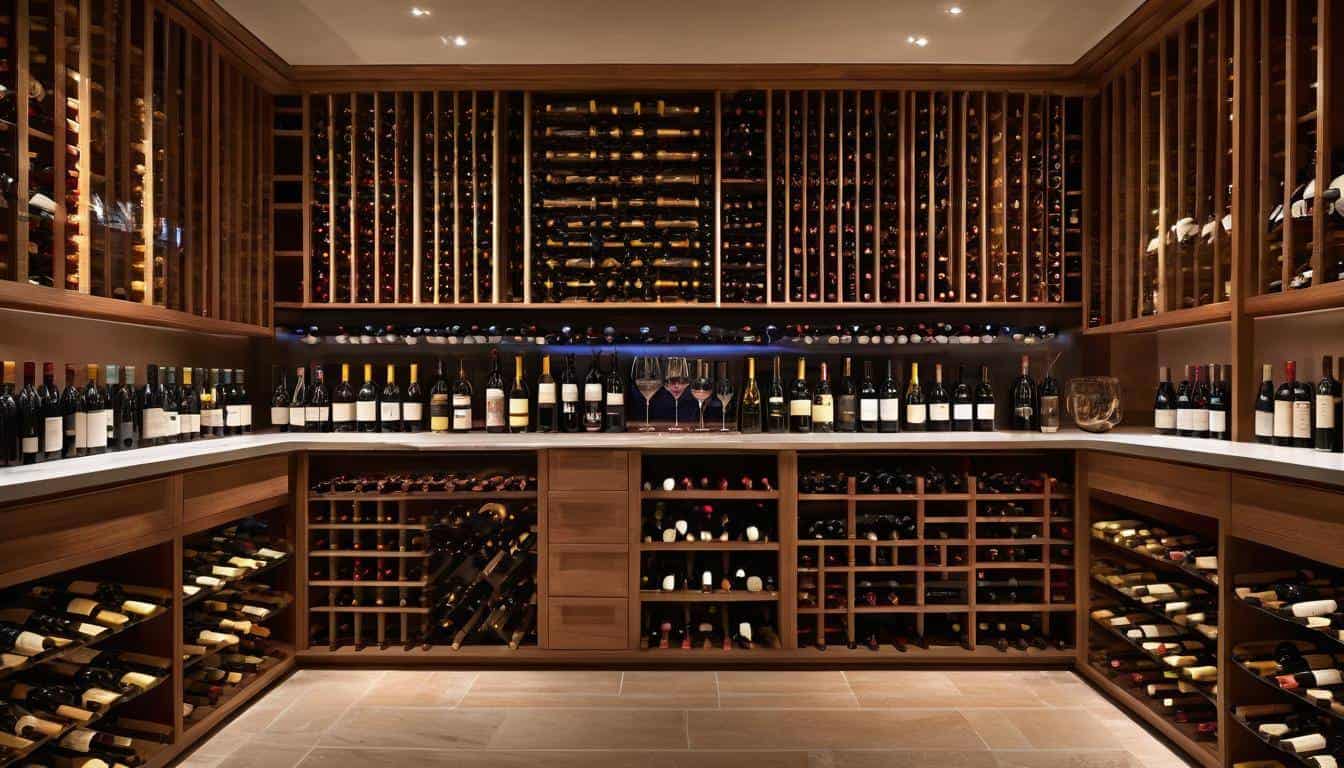Wood is a highly beneficial material for wine cellar construction due to its inherent insulation properties. It not only maintains a stable storage temperature for wines but also naturally controls the humidity inside the cellar, crucial elements in preserving wine quality. Different woods like Redwood and Oak hold unique advantages. Redwood resists high humidity levels often found in cellars, while Oak can nicely influence the taste of the stored wine, making it more flavorful. Cedar too comes into play with its skill to ward off rot and insects, which could otherwise damage the cellar under humid conditions. Now let’s delve deeper into why wood makes for an excellent choice for wine cellars.
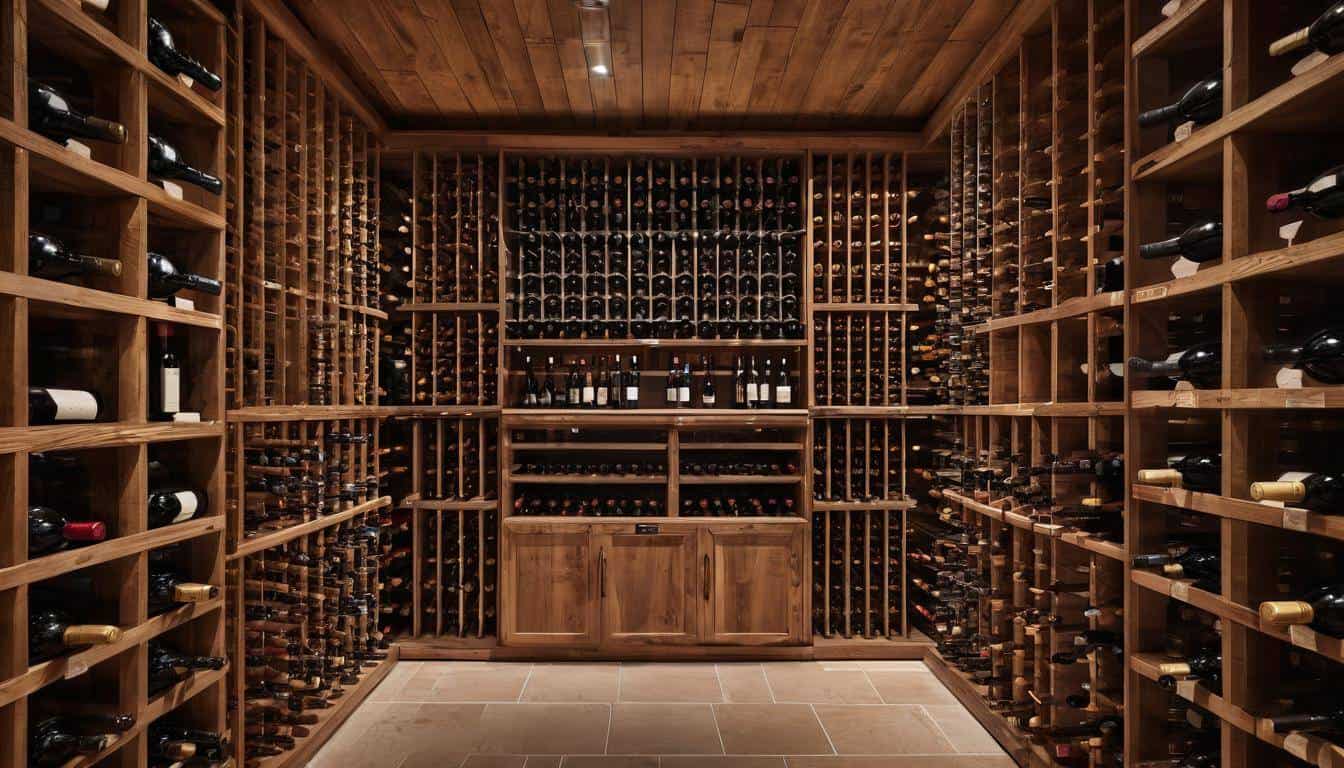
Wooden wine cellars offer excellent insulation, maintaining a consistent temperature and humidity ideal for storing and aging wines. Additionally, they provide an elegant and customizable storage solution, enhancing the aesthetic appeal of any home or commercial space.
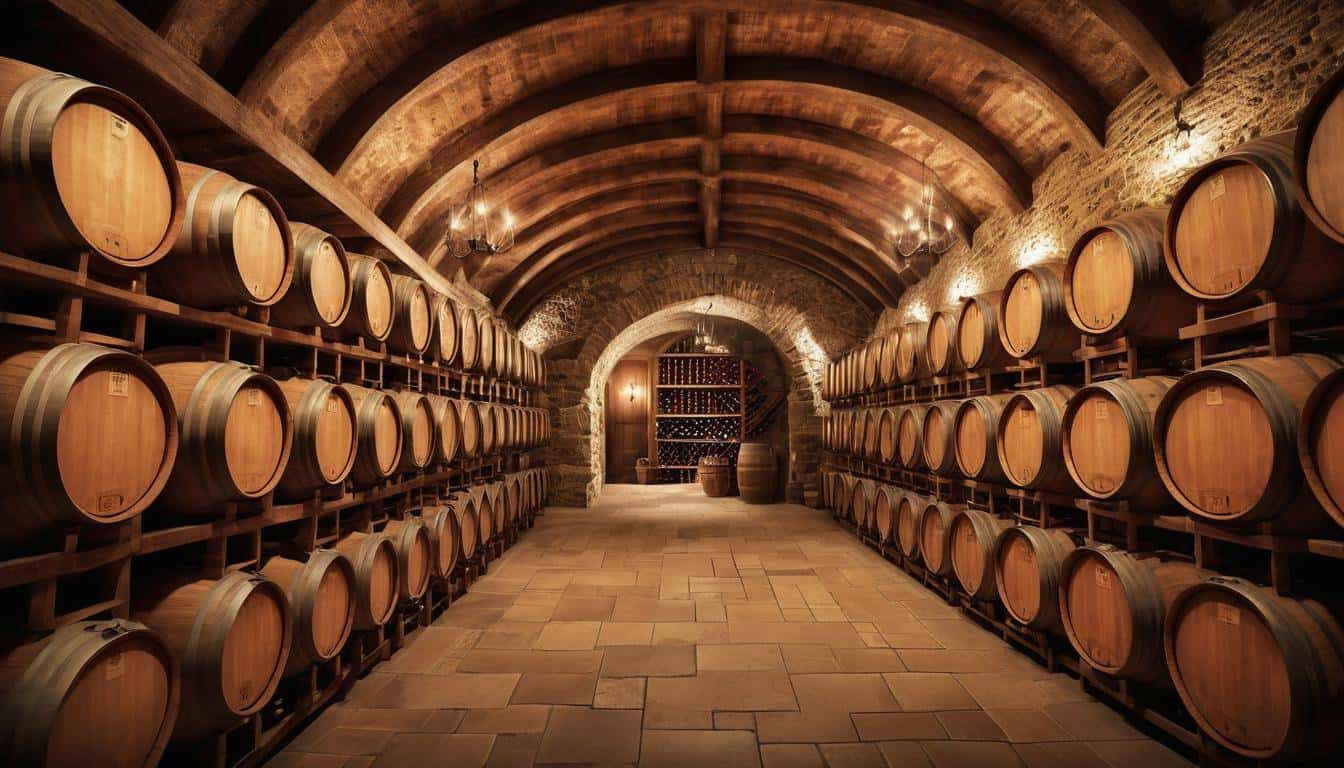
Advantages of Wooden Wine Cellars
When it comes to wine storage, wooden wine cellars stand out for various reasons. One of their primary advantages is the exceptional insulation they provide. Wood has natural insulating properties that help maintain a stable environment inside the cellar, crucial for storing wine and preventing temperature fluctuations that can affect its quality.
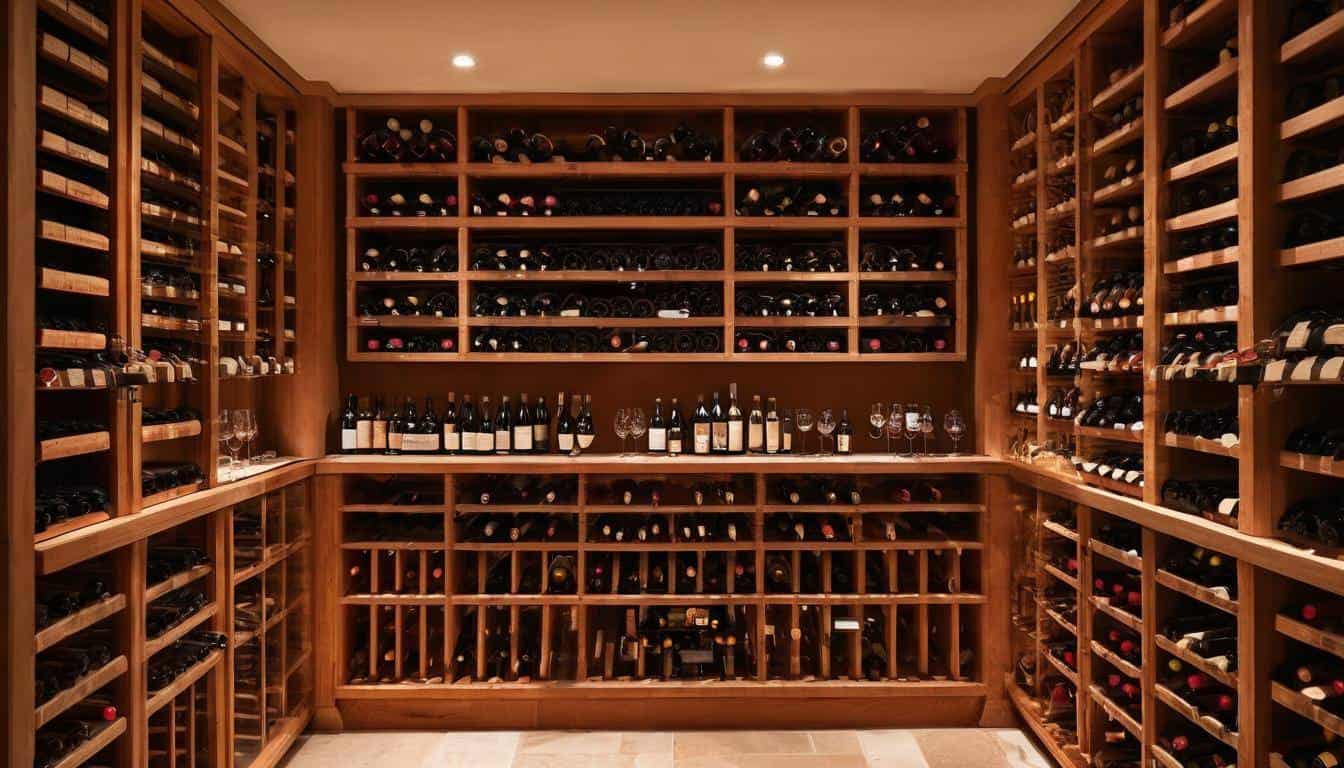
The insulation provided by wooden wine cellars is particularly important for maintaining the optimum conditions for wine storage. Consistent temperature and humidity levels are essential for allowing wine to age gracefully. Wooden cellars help create an environment with ideal conditions, usually around 55-58°F (13-15°C) and 55-75% humidity, promoting the proper aging of fine wines.
Consider this: In environments with extreme temperature changes, wine can expand and contract in the bottle, potentially causing leaks or oxidation, ultimately affecting its taste and aroma. The insulating properties of wood play a critical role in regulating these fluctuations, safeguarding the wine from heat and cold exposure.
In addition to insulation, wood also possesses natural humidity-regulating qualities, another key benefit for wine storage. Maintaining optimal humidity levels is vital for preserving wine quality over time. Wooden wine cellars help to regulate humidity, preventing corks from drying out and allowing a small amount of oxygen interaction with the wine, contributing to its aging process and flavor profile.
Furthermore, wooden wine cellars offer aesthetic value that goes beyond functionality. The rich textures, colors, and patterns of different wood types contribute to the overall appeal of a home. For instance, redwood wine racks with their natural reddish grain or mahogany with their warm, rich tones are not only practical but also visually pleasing additions to any space.
Just like a classic piece of furniture adds character to a room, a well-crafted wooden wine cellar can enhance the visual ambiance of your home. It becomes more than just a functional storage space; it becomes a statement piece that adds sophistication to your living space.
It’s clear that wooden wine cellars offer a multitude of advantages, from creating an ideal storage environment to adding aesthetic charm to your home. The combination of practical functionality and visual appeal makes them an excellent choice for any wine enthusiast or homeowner looking to enhance their living space.
As we continue our exploration of wooden wine cellars, let’s now shift our focus to an in-depth analysis of various wood types commonly used in crafting these exquisite spaces.
Pearls of Wisdom on Wood Types
When it comes to wooden wine cellars, the type of wood you choose is of utmost importance. Each type of wood offers unique characteristics and benefits that impact not only the aesthetic appeal but also the functionality and longevity of your wine cellar. Let’s delve into some key insights about different wood types and their suitability for wine cellars.
Redwood
Redwood is widely favored for its remarkable resistance to moisture and decay, making it an ideal choice for wine cellars exposed to humid conditions. Its durability and ability to withstand long-term exposure to moisture ensure that your cellar remains resilient over time. Furthermore, redwood’s natural properties enable it to thrive in cooler environments, which is essential for the proper aging and storage of wines.
Oak
A staple in the winemaking industry, oak is renowned for its tight grain and unique ability to impart distinctive flavors such as vanilla and spice to wines. It is commonly used in crafting wine barrels due to its influential impact on the aging process and flavor profile of wines. While oak may not be the primary choice for cellar construction, its significance in shaping the character of wines cannot be understated.
Cedar
Cedar possesses natural properties that make it well-suited for humid wine cellar environments. It is not only highly resistant to insects but also imparts a pleasant aroma to the cellar—a delightful feature that adds an extra layer of allure to the ambiance. The aromatic essence of cedar contributes to the overall sensory experience, creating an inviting atmosphere within the cellar.
Conclusion
Wood selection goes beyond mere aesthetics; it directly influences the environment in which your precious wines will mature and develop. Understanding these nuances allows you to make an informed decision when customizing your wine cellar, ensuring that it aligns with your storage needs and enhances the quality of your collection.
With these invaluable insights at your disposal, you are better equipped to choose a wood type that complements your vision for the perfect wine cellar—balancing practical considerations with enhancing the overall appeal and functionality.
Armed with insights into wood types, it’s time to shift our focus to critical factors influencing the construction of a top-tier wine cellar.
Critical Factors in Wine Cellar Construction
When it comes to building a wine cellar, certain key factors need to be carefully considered to ensure that your wine collection is preserved and aged properly. Let’s explore some of the most critical elements involved in wine cellar construction.
Temperature and Humidity Control
It’s not just about stacking bottles; it’s about providing them with the perfect environment to age gracefully. Maintaining a consistent temperature between 52-64°F and humidity levels between 60-70% is crucial for wine preservation. Just like fine art or rare books, wine needs to be kept under specific conditions to achieve its full potential.
Why is this so important? If it gets too warm, the wine can age too quickly, which might change its taste and aroma. If it’s too cold, it might not age at all. Similarly, excessive humidity can lead to mold growth on corks and labels, while low humidity can cause corks to dry out and shrink, letting air seep into the bottle—which can spoil the wine inside.
Insulation and Vapor Barriers
Proper insulation and vapor barriers play a significant role in maintaining the desired temperature and humidity levels within the cellar. They help prevent heat and moisture from seeping into the cellar, protecting the wine from external fluctuations. Think of it as giving your precious wine bottles a cozy home where they won’t be affected by external weather conditions.
Imagine trying to store your favorite wine in a place that’s too damp or too hot. It’s like trying to take a nap in the middle of a loud, chaotic party—there’s no peace or rest for anyone involved!
Wine Racking and Layout
The way you organize your wine racks significantly impacts your ability to store a large collection effectively. The layout and design of wine racks are pivotal in maximizing storage capacity while ensuring proper airflow and accessibility to bottles for aging or consumption.
If you stack bottles incorrectly or without proper spacing, you run the risk of disturbing the sediment in older wines when you need to move them around. Proper racking ensures that each bottle is easily accessible while being protected from disturbance.
So there you have it—these core elements are indispensable in constructing a reliable wine cellar that not only provides essential storage space but also ensures that your valuable wine collection stays safe and ages gracefully over time.
As we’ve seen, understanding these critical elements is pivotal in creating a functional and dependable wine cellar. Now let’s delve into the art of designing a custom wine cellar that harmonizes both form and function seamlessly.
The Art of Custom Wine Cellar Design
When it comes to designing a custom wine cellar, it’s not just about putting up some shelves and calling it a day. It’s an intricate process that involves combining aesthetics with functionality, all while ensuring that the space is tailored to the individual and their collection. Think about it as creating a beautiful, personalized home for your wine.
In this artful endeavor, it’s crucial to consider every detail. Spatial constraints are one of the primary factors to consider, guiding the entire layout of your cellar, whether you want a small, intimate space or a larger, more expansive cellar.
Additionally, the storage requirements should also be a top consideration based on whether you plan to primarily store bottles for short-term enjoyment or age your wines over several years.
Creating a custom wine cellar is akin to tailoring a suit—you want every aspect to fit just right and reflect your personal style. Every element must be considered, from the choice of materials and lighting to climate control systems. It’s about marrying form and function in a way that is perfectly suited to your needs and preferences.
The selection of materials is another crucial part of the design process. The beauty and durability of woods like oak, mahogany, cedar, or redwood open up a world of possibilities. Proper lighting greatly impacts the ambiance and visual appeal of the cellar while also ensuring that your wines are showcased in an optimal manner. Lastly, climate control systems play a pivotal role in maintaining the ideal storage conditions for your wines.
Let’s compare some key aspects:
Aspect |
Considerations |
|---|---|
Spatial Constraints |
Size of space, layout |
Storage Requirements |
Short-term vs long-term storage needs |
Materials |
Wood type, cost comparison, insulation |
Lighting |
Intensity, ambiance |
Climate Control |
Temperature, humidity regulation |
Custom wine cellar design truly is an art form that requires thoughtful planning and a keen eye for detail. Each element harmoniously contributes to creating a space that showcases both your collection and your personal style.
As we step into the next phase of our journey toward crafting the perfect wine cellar, let’s explore the potential pitfalls to avoid in choosing the ideal cellar for your collection.
Pitfalls to Avoid in Choosing a Cellar
When it comes to selecting the right wine cellar, there are several key mistakes to steer clear of—ventilation oversights, temperature fluctuations, and UV exposure. These are crucial pitfalls to avoid, ensuring your wine cellar keeps your collection in optimal condition.
One common pitfall is neglecting proper ventilation. Inadequate airflow can lead to mold growth in your cellar, posing a serious threat to the integrity and quality of your prized wine collection. Proper ventilation is paramount, ensuring that fresh air circulates and regulates the environment where your wine is stored. By maintaining optimal humidity levels and minimizing the risk of mold, you’ll protect the investment you’ve made in collecting such fine wines.
Another pitfall to be mindful of is ignoring temperature fluctuations. Fluctuations in temperature can dramatically accelerate the aging process of wine, impacting its taste and aroma over time. A stable, cool environment is essential for preserving the delicate balance of flavors in each bottle. Without this stability, the chemical reactions within the wine can occur at an accelerated rate, potentially compromising its quality.
Going hand in hand with temperature control, overlooking UV protection is another mistake that can jeopardize the quality of your wine collection. Exposure to direct sunlight or ultraviolet (UV) rays can be detrimental to wine, causing deterioration and undesirable changes in taste. To mitigate this risk, it’s crucial to have UV-resistant glass or apply appropriate shielding within the cellar to protect your wines from any harmful light exposure.
Consider utilizing shaded windows or UV film to minimize exposure, safeguarding your precious bottles from the damaging effects of sunlight. By taking these measures, you’re actively defending your investment and ensuring your wines remain at their best for years to come.
In summary, by avoiding these common pitfalls and heeding the tips provided, you can guarantee that your wine cellar provides an ideal home for your cherished collection, safeguarding its quality and enhancing your overall enjoyment of each bottle.
Transforming Spaces into Cellars: Final Thoughts
Imagine stepping into your carefully constructed wine cellar, filled with the elegant aroma of aged oak and the promise of exquisite vintages waiting to be uncorked. It’s not just a place to store your precious wine collection; it’s a destination in itself—a seamless blend of functionality and beauty. Creating a space where you can display and preserve your wines requires thoughtful planning and attention to critical design elements. From selecting the appropriate wood for the construction to considering the layout and engineering, every aspect contributes to transforming a mere room into a remarkable custom wine cellar.
The Right Wood Choice: The foundation of any wooden wine cellar lies in the selection of the wood. Different wood types offer varying characteristics that can impact both the aesthetic appeal and functionality of the cellar. Redwood wine racks are suited for humid and cool conditions found in cellars, while mahogany boasts a beautiful reddish grain, adding warmth and timeless elegance to the space. For a more modern look, some enthusiasts opt for grey wine cellars that offer a sleek, contemporary aesthetic. Pine wine racks, being affordable and receptive to stains, offer versatility in design. For a warm and inviting ambiance, brown wine cellars are an excellent choice, adding a classic touch to your space. Each wood type brings its unique properties, allowing enthusiasts to design their ideal storage environment. For those seeking a neutral palette, beige wine cellars provide a timeless and versatile option that complements various interior styles.
Construction Considerations: Beyond wood selection, meticulous attention must be paid to the construction process. The integration of modular racking can provide a flexible solution, allowing for personalized configurations that cater to specific needs. Moreover, free designs offered by experts enable customers to visualize and choose their preferred modular racking, ensuring that every inch of space is maximized efficiently.
Picture this: You’ve meticulously selected a rich mahogany for the shelving system and chosen to integrate climate control solutions for preserving your prized bottles. Alternatively, you might opt for a black wine cellar design for a bold, sophisticated look that makes your collection stand out. The layout is designed to reflect a fusion of traditional wine storage methods with modern aesthetics. For a unique twist, you might consider a navy blue wine cellar that adds a touch of elegance and depth to your space. These considerations ensure that your collection remains both beautifully displayed and well-preserved.
Creating your dream wooden wine cellar demands a seamless blend of functionality and aesthetic appeal – from the wood choice to construction considerations. To benefit from expert advice and guidance on every element of creating your dream cellar, visit Amazing Home Decor Co for more in-depth guidance.

